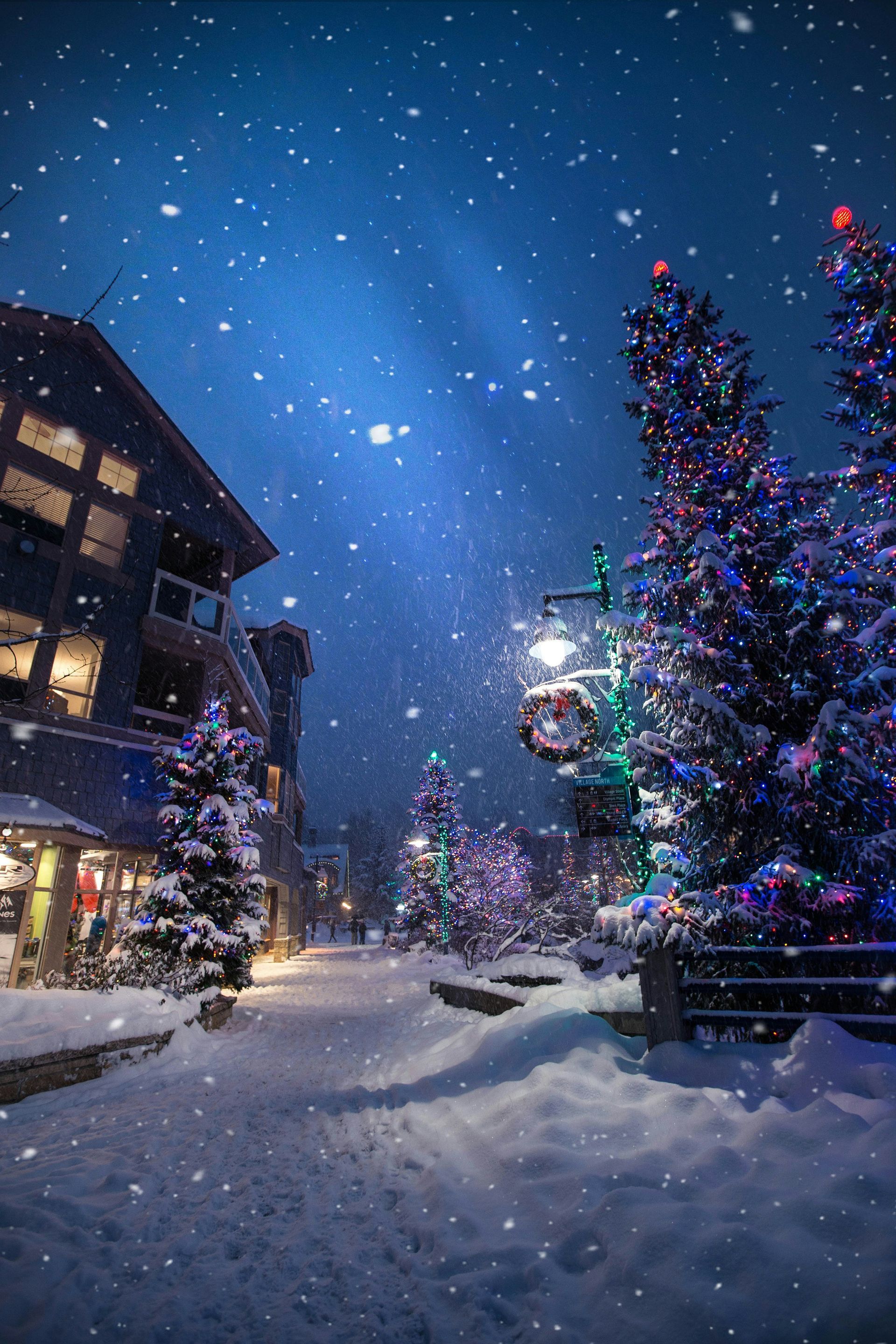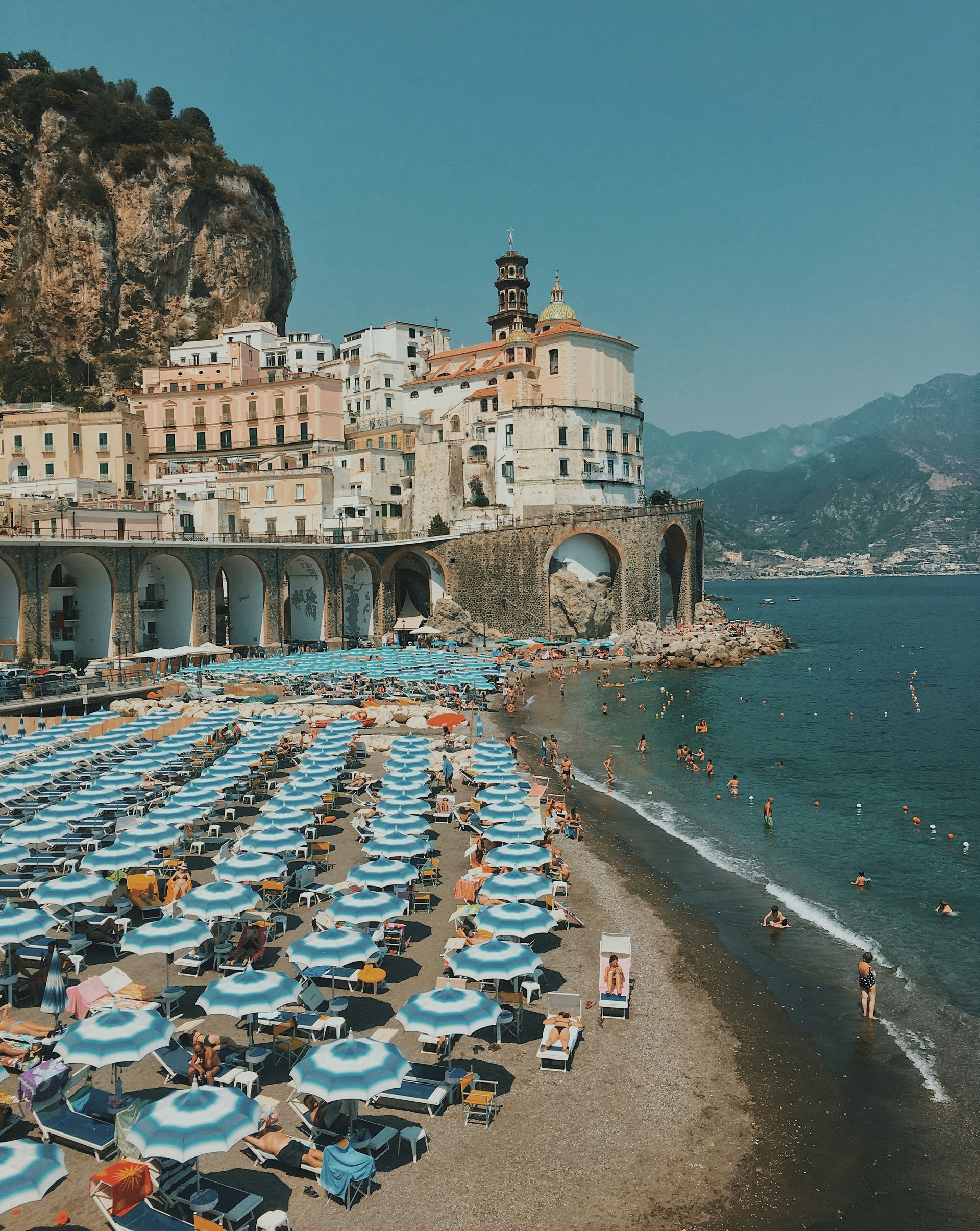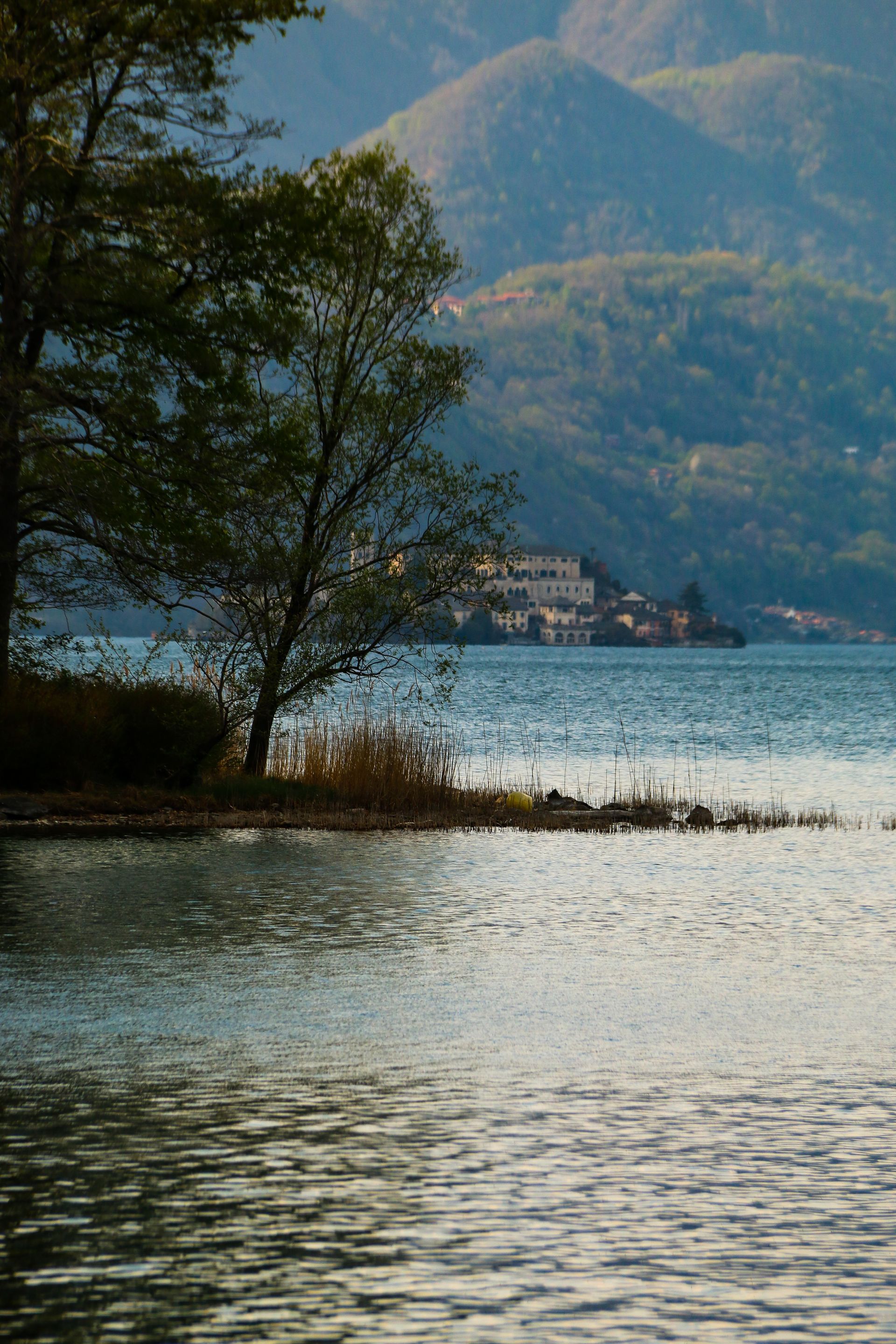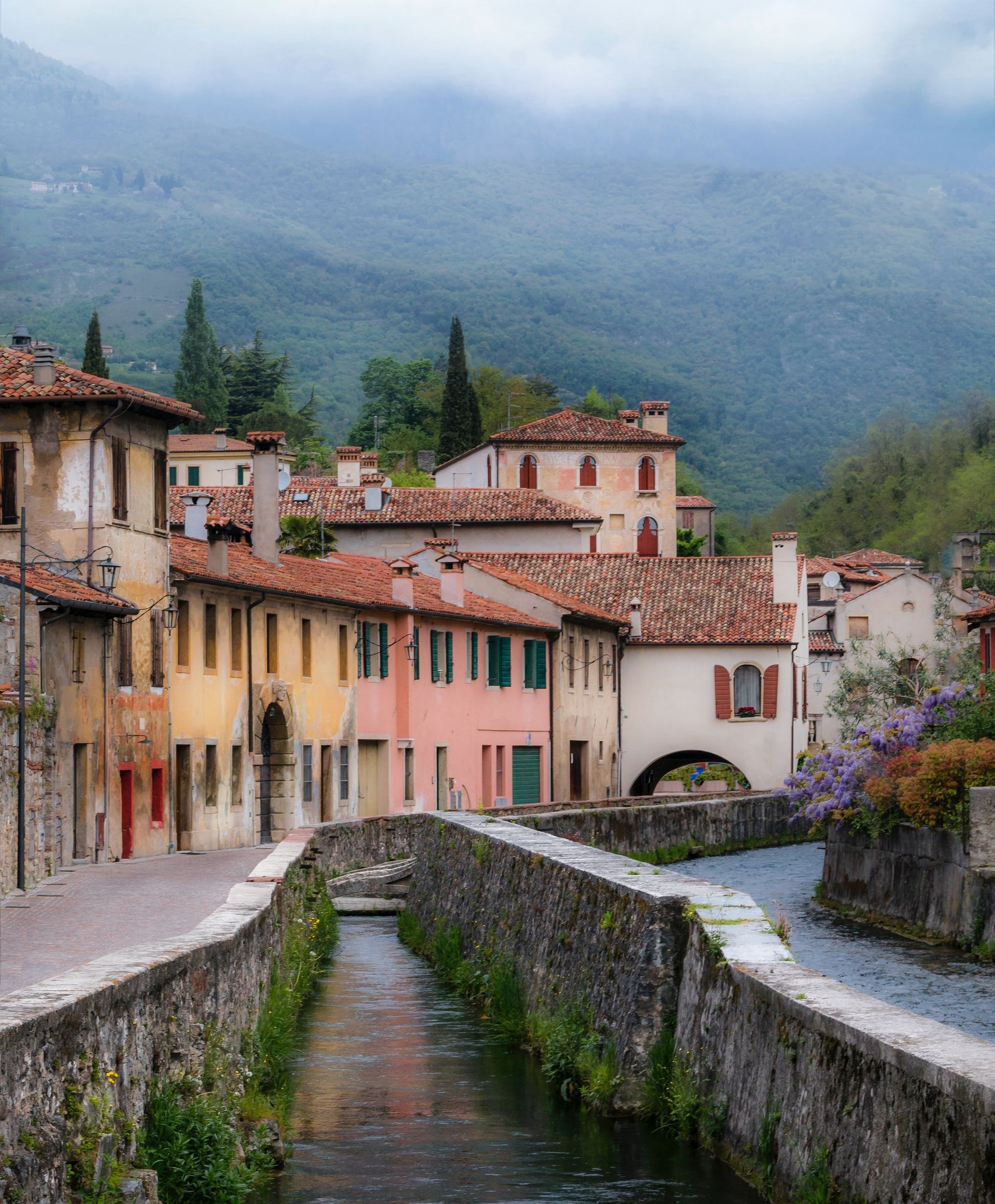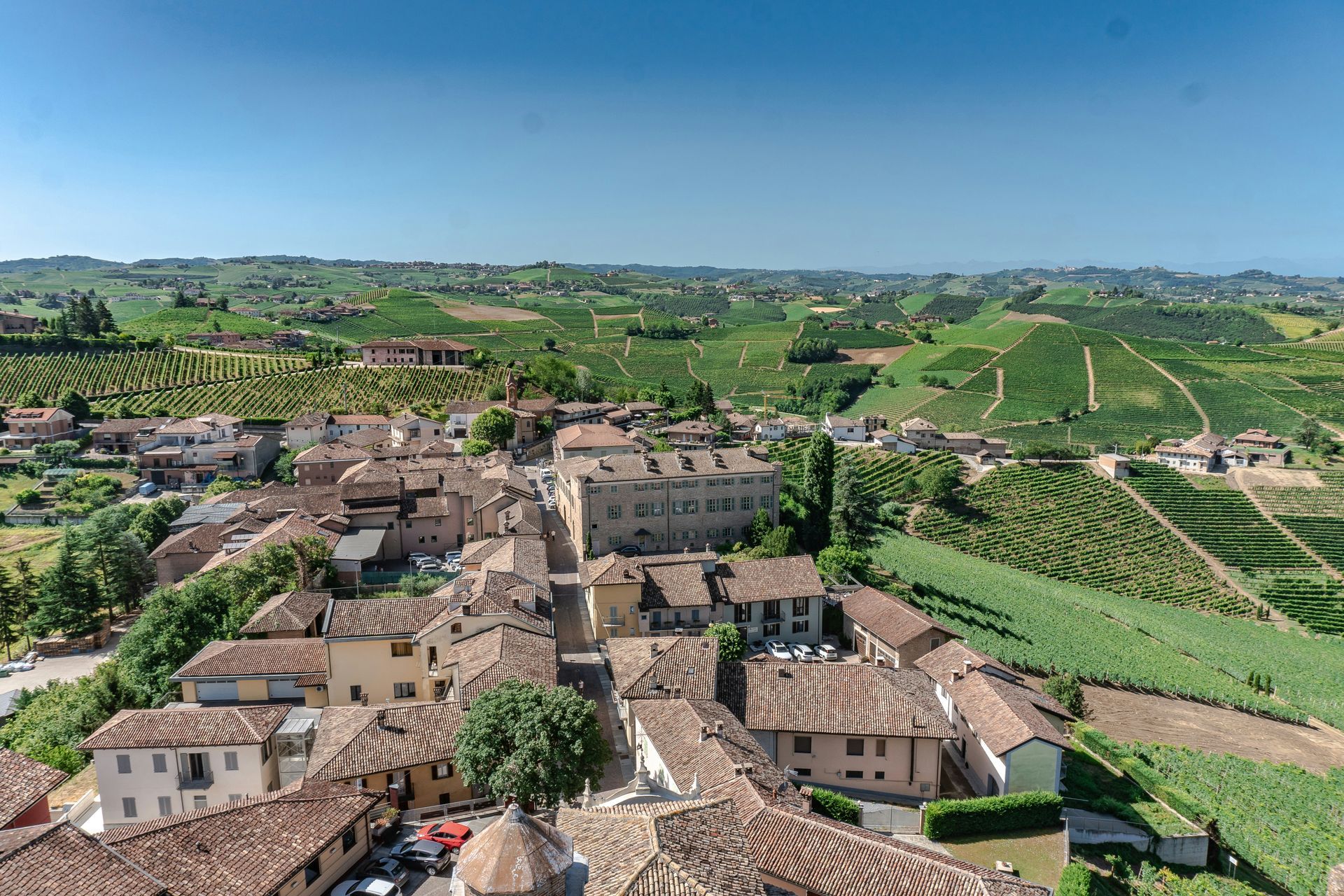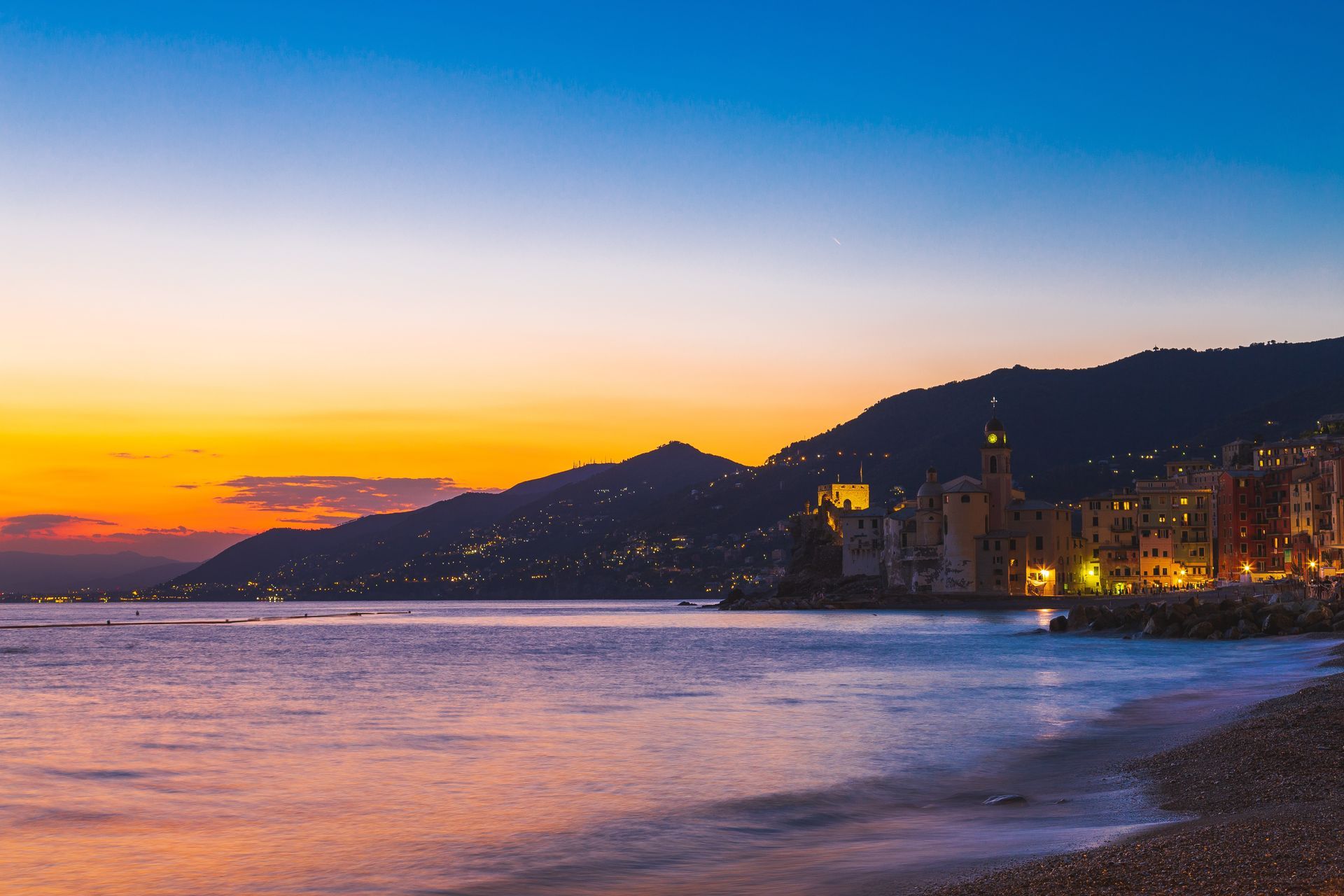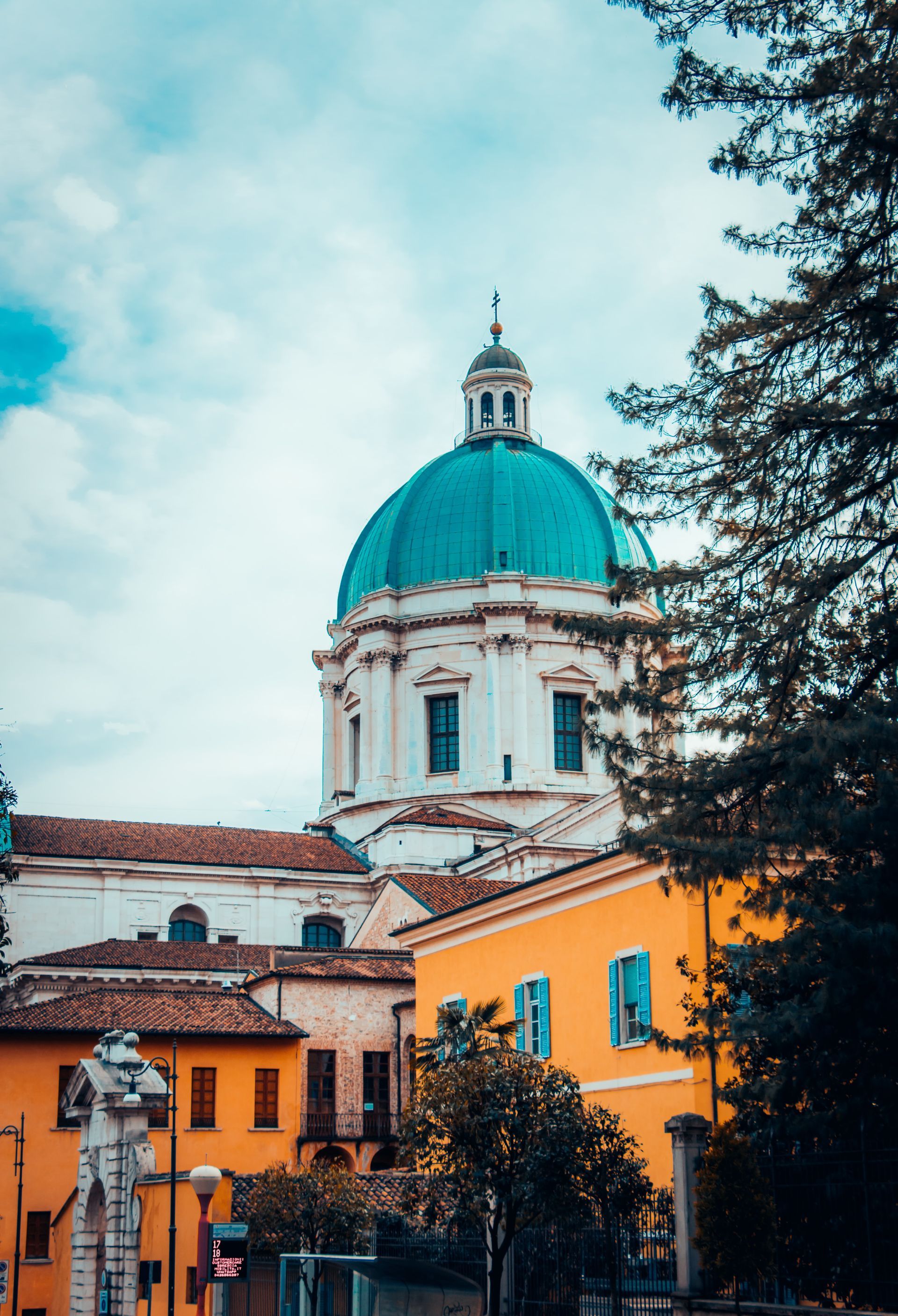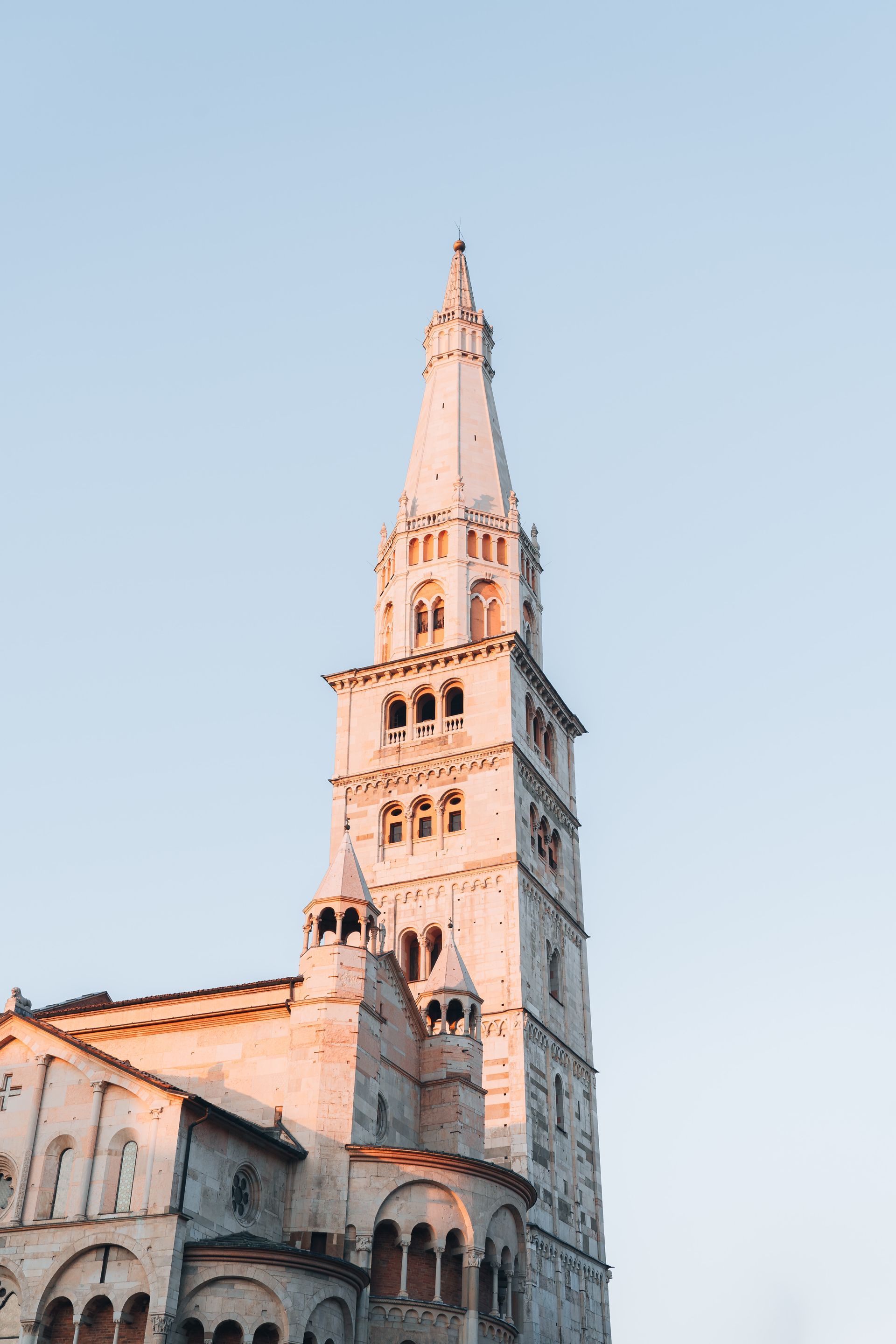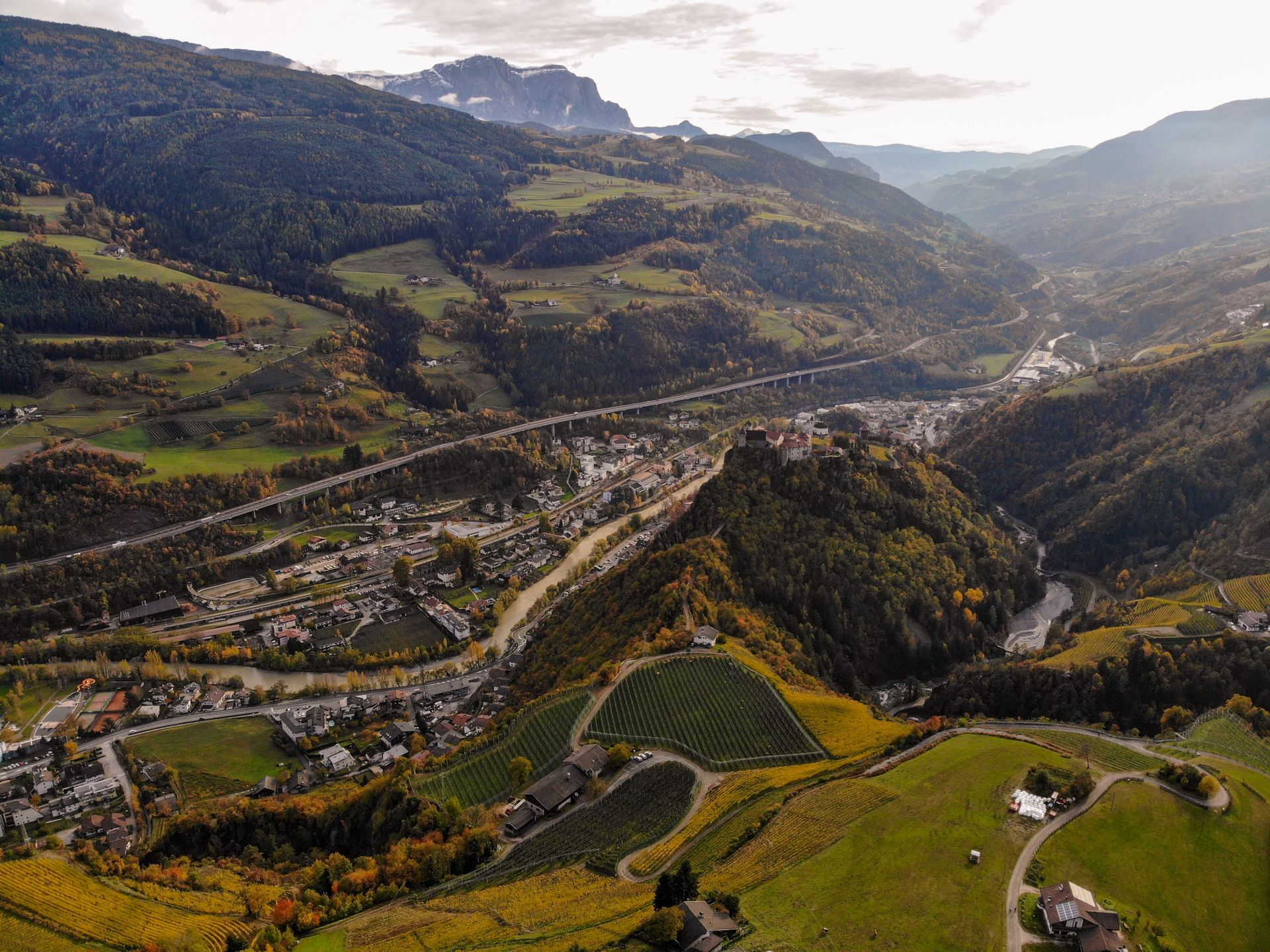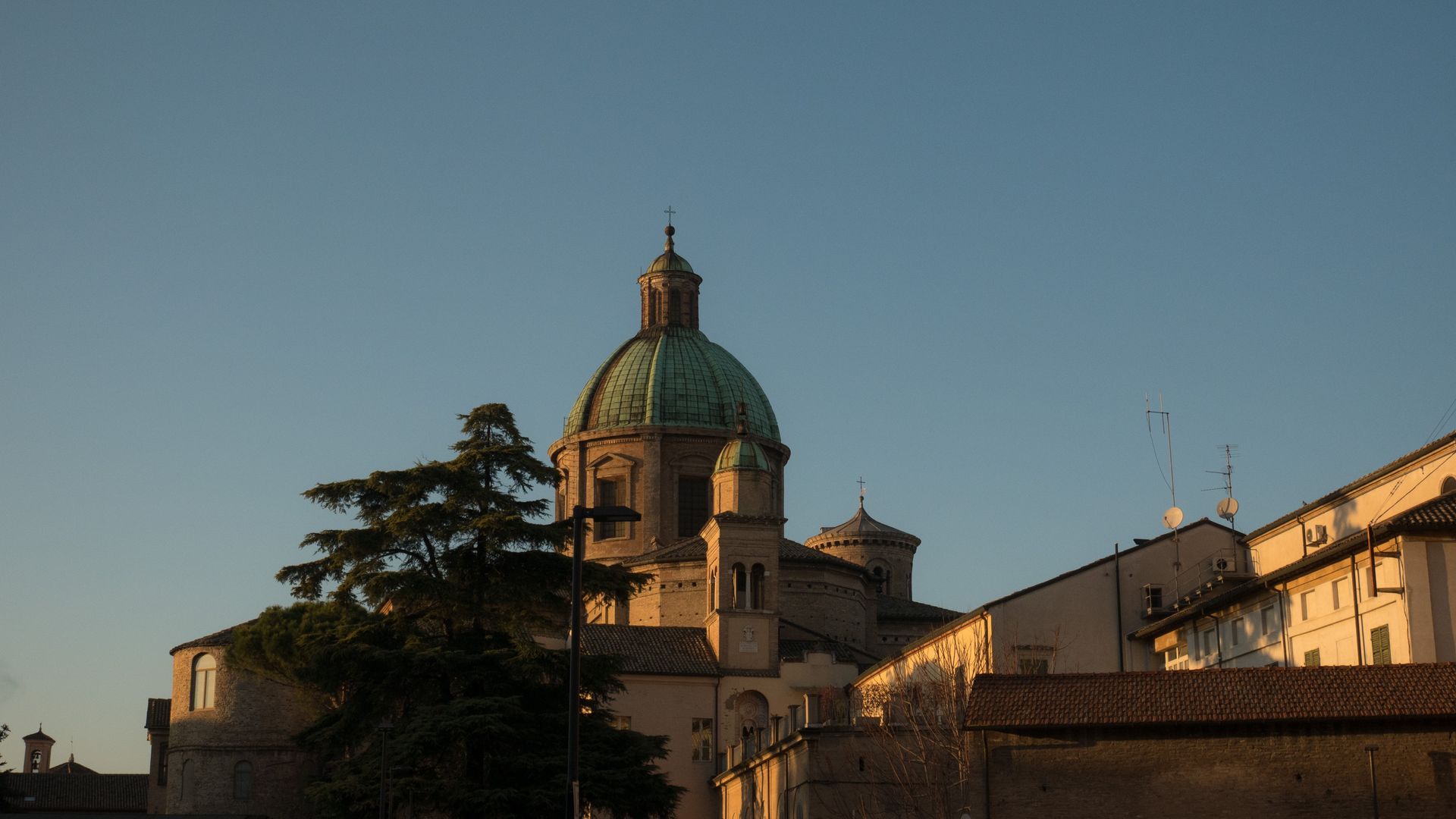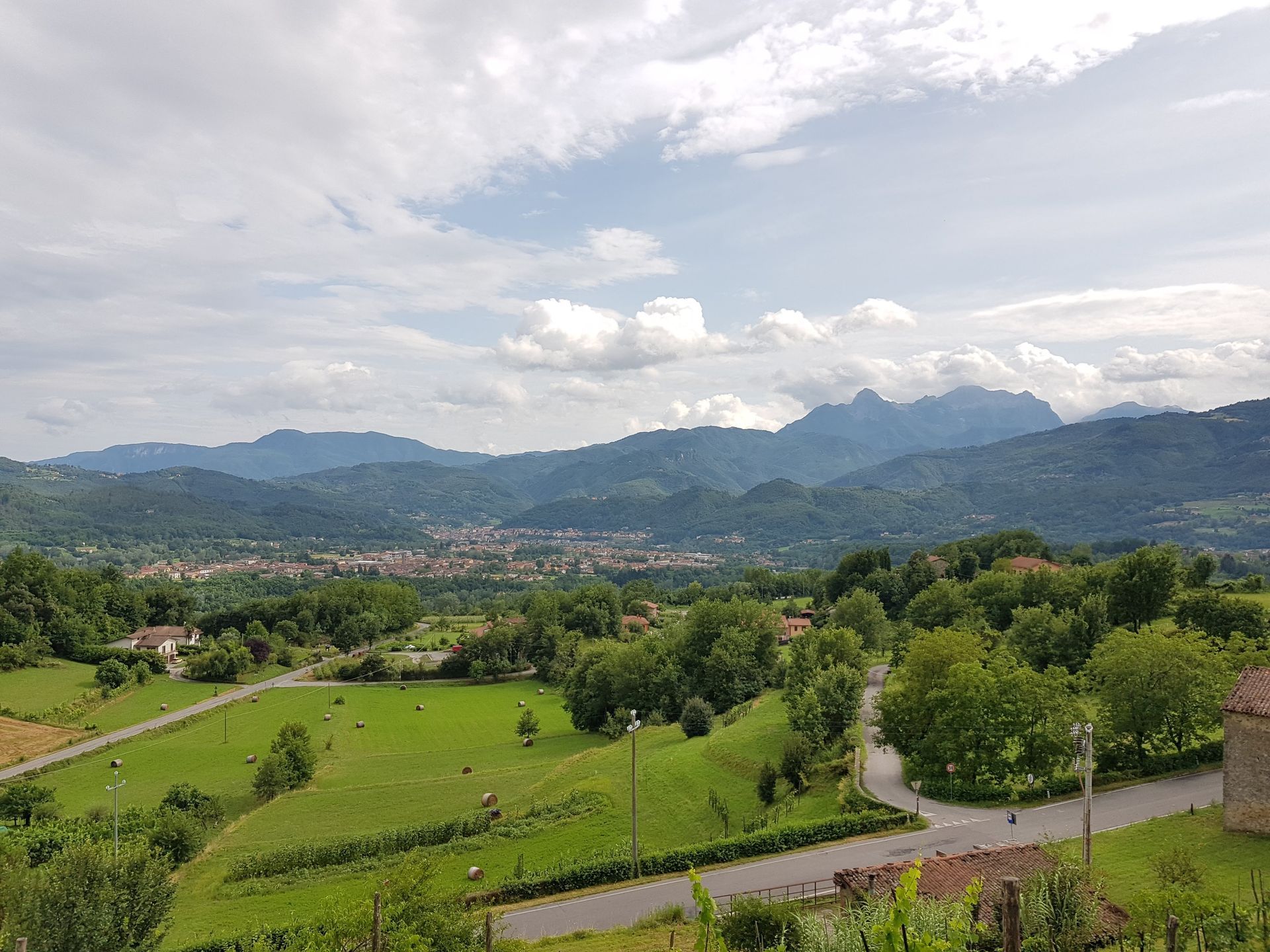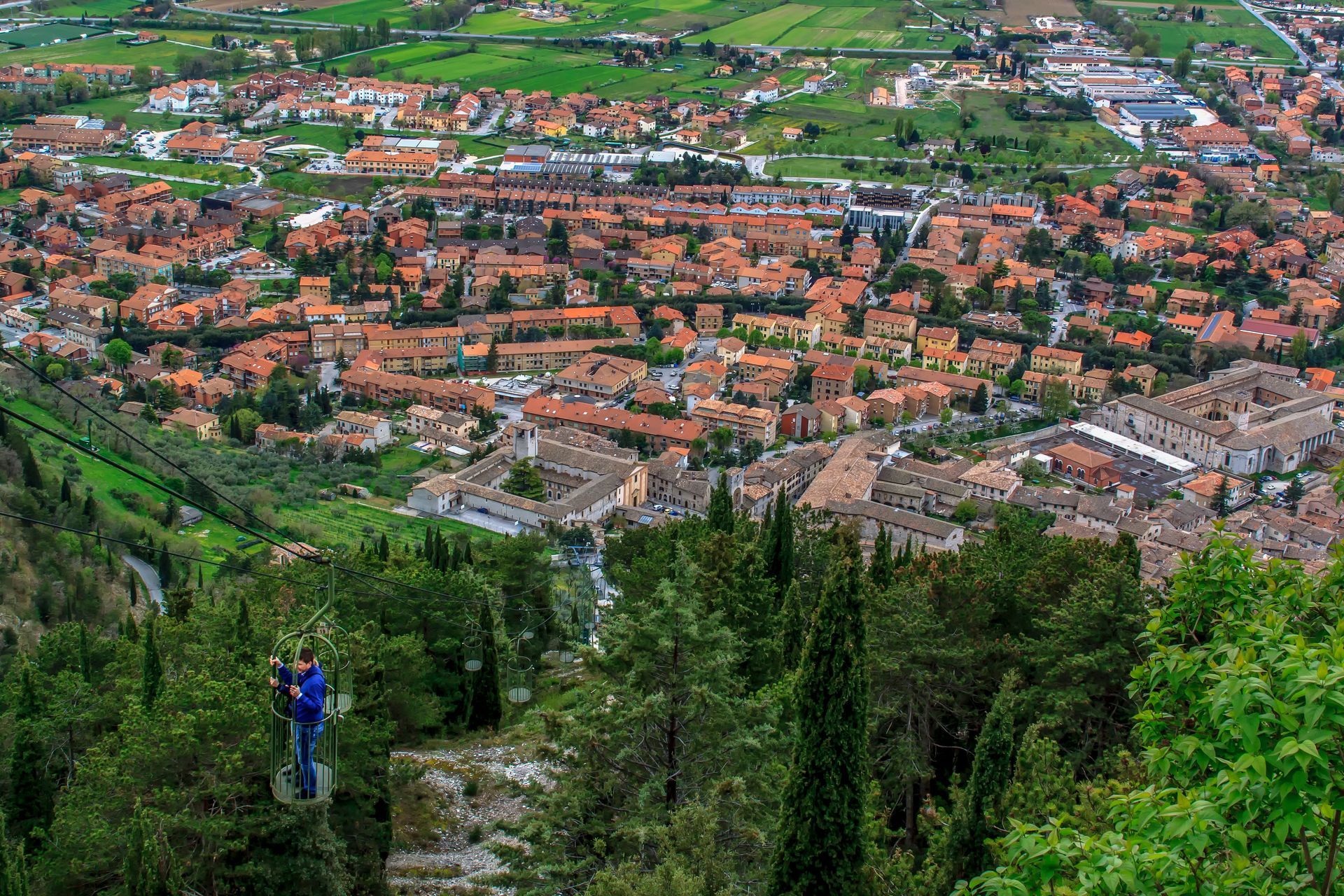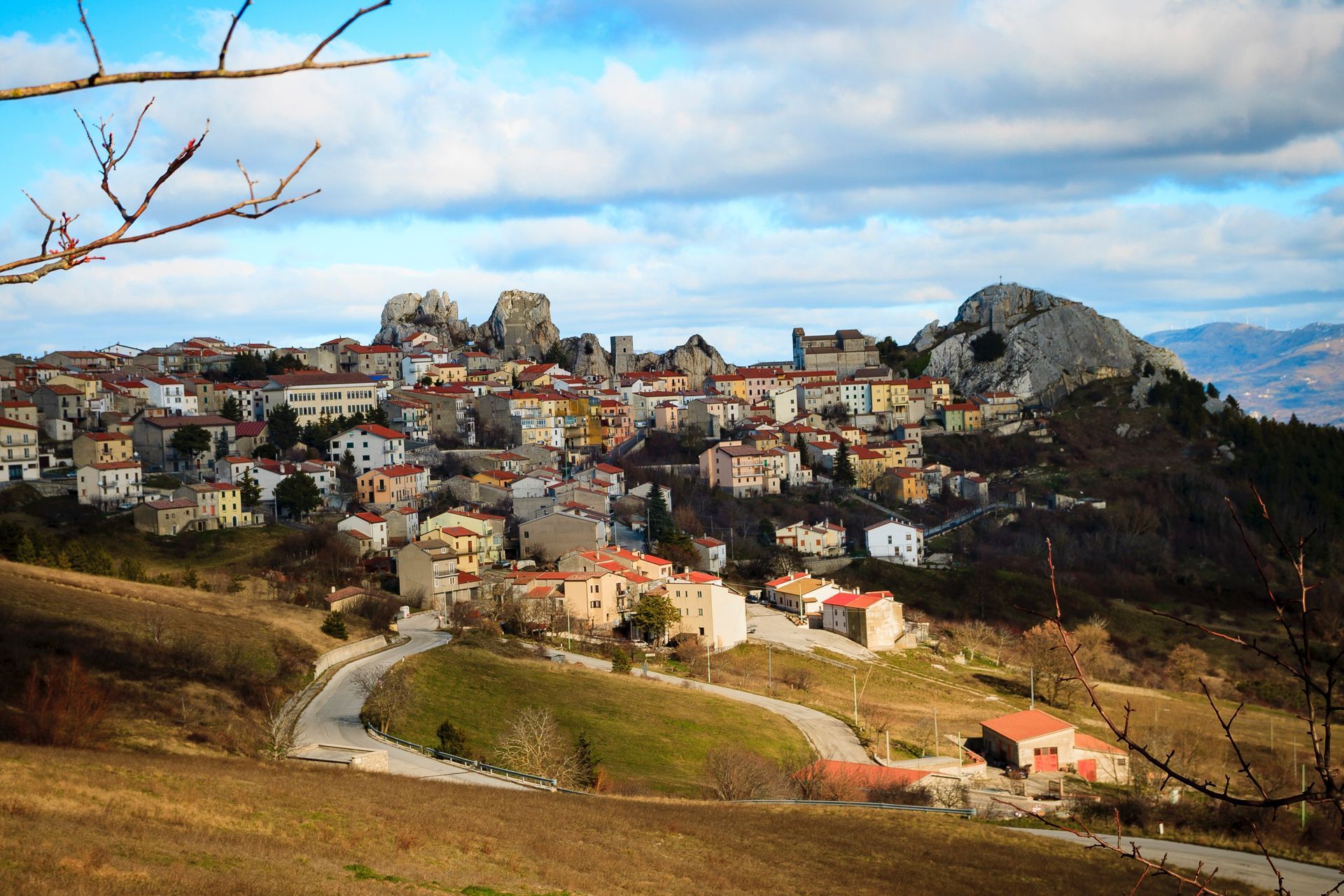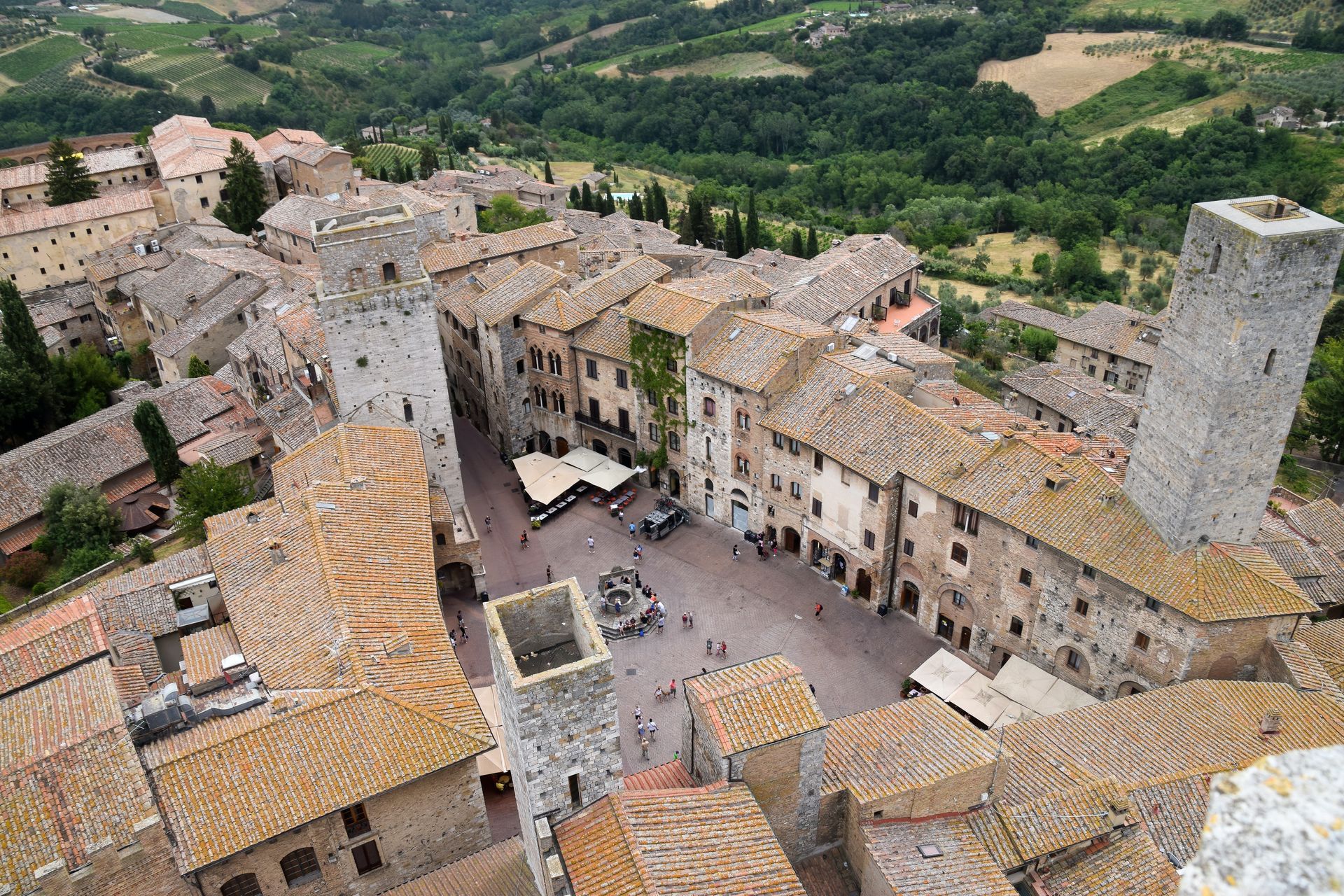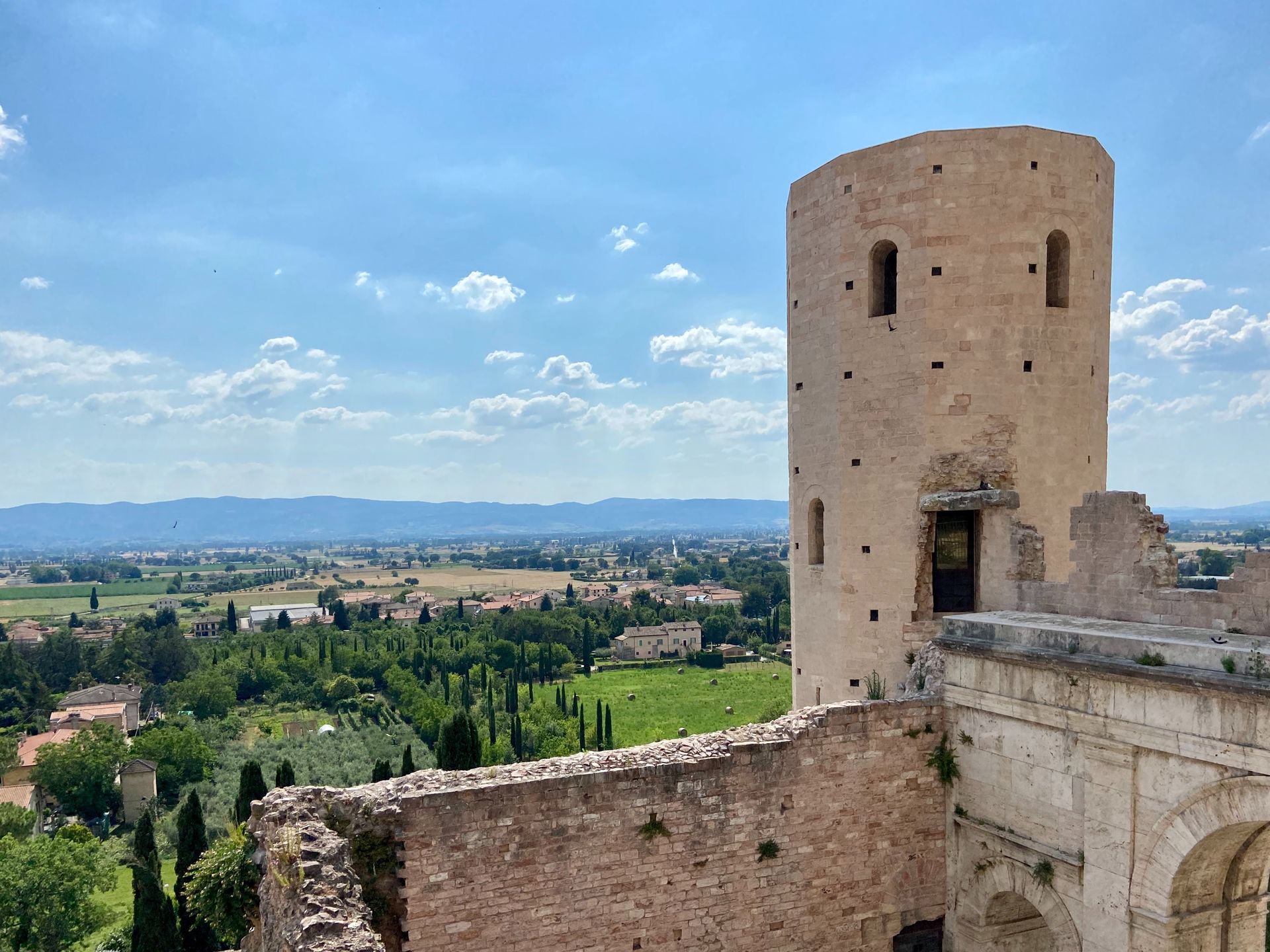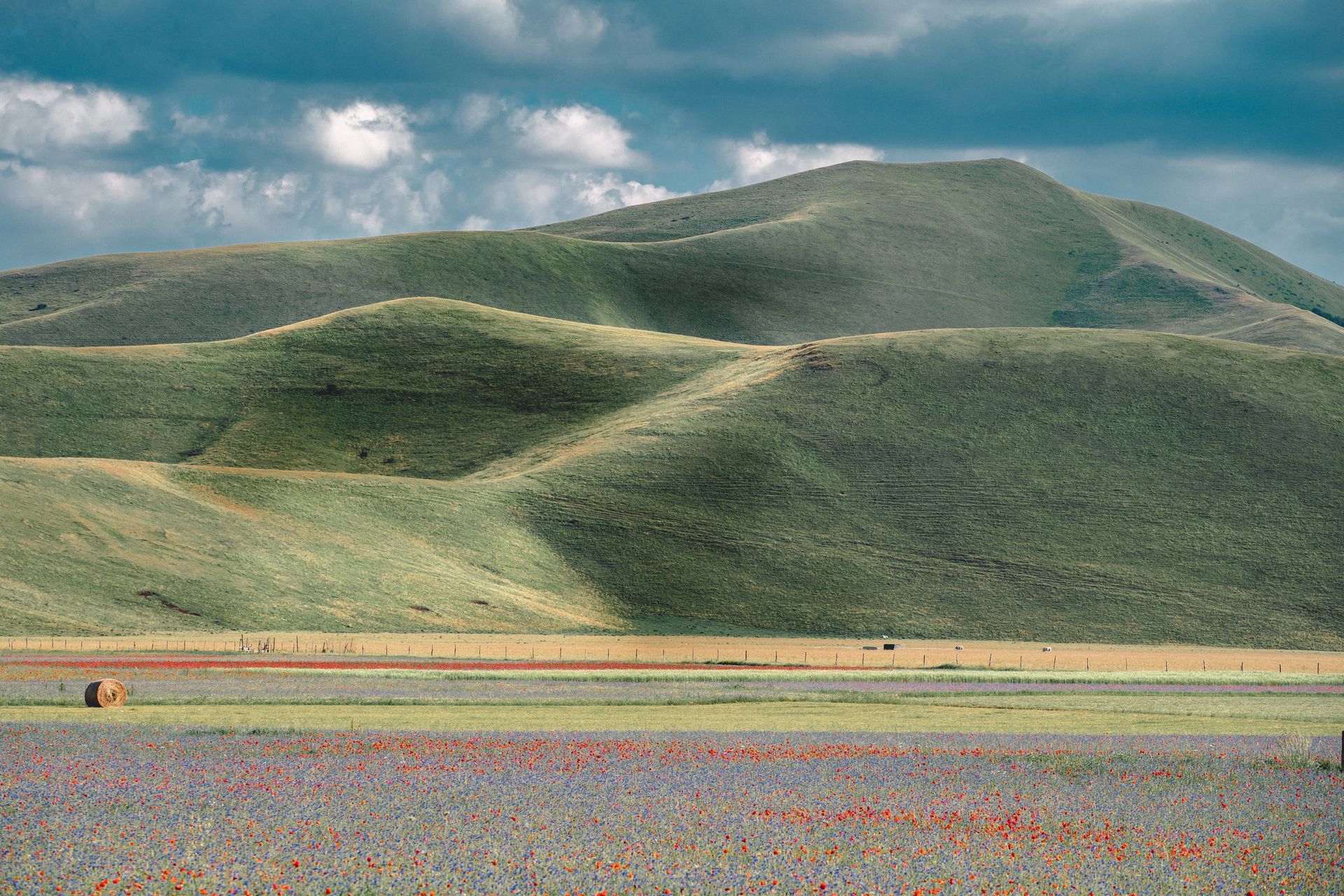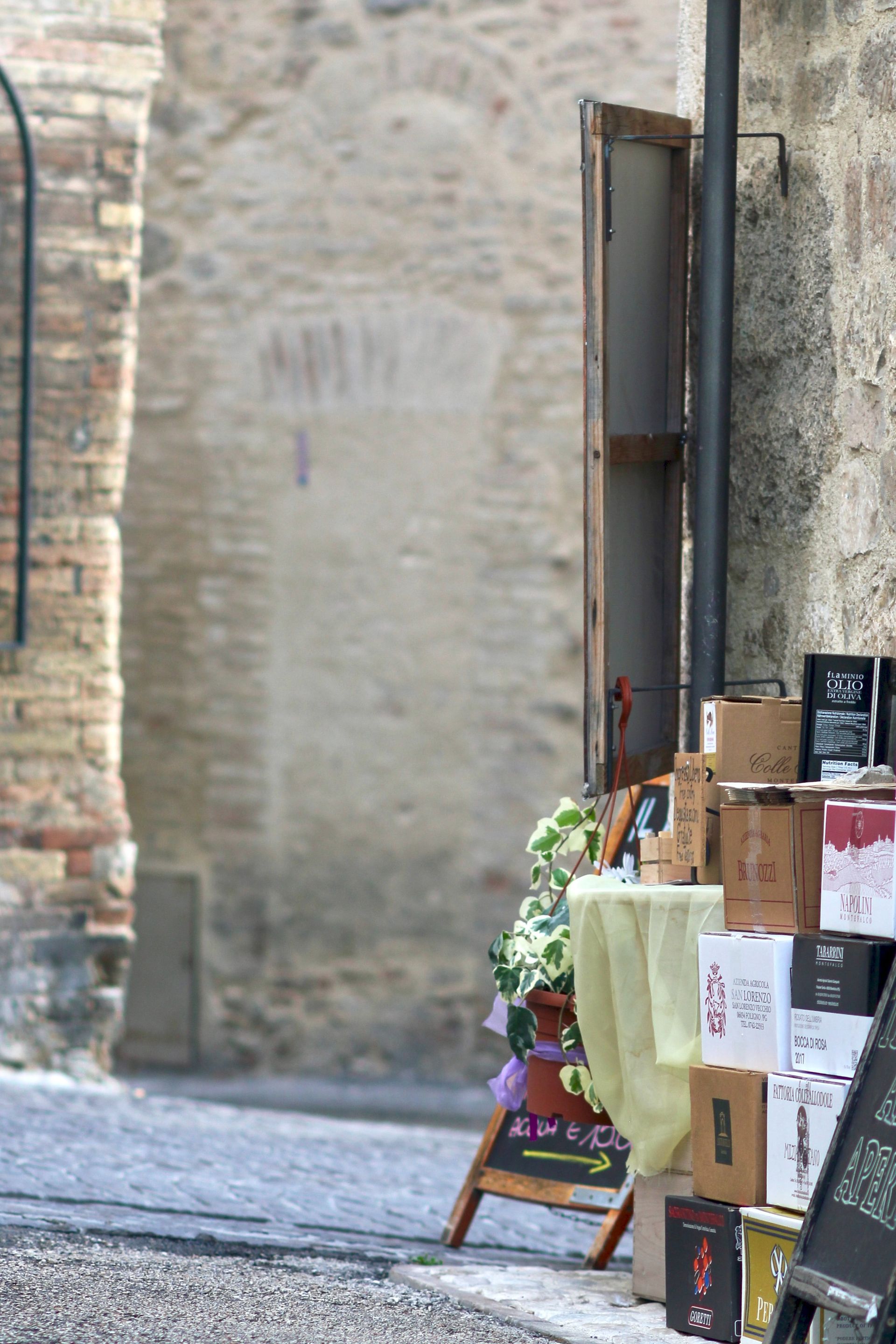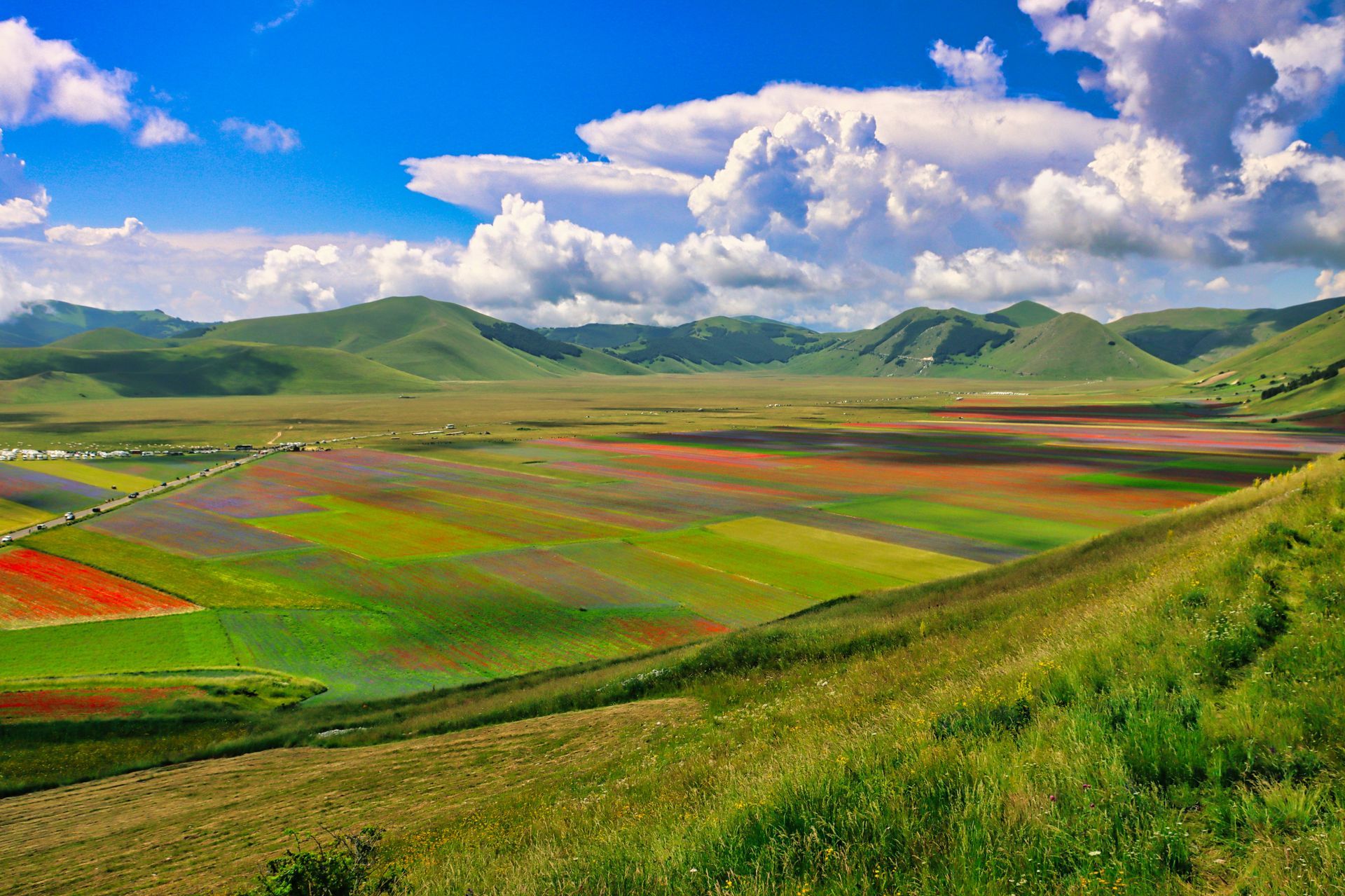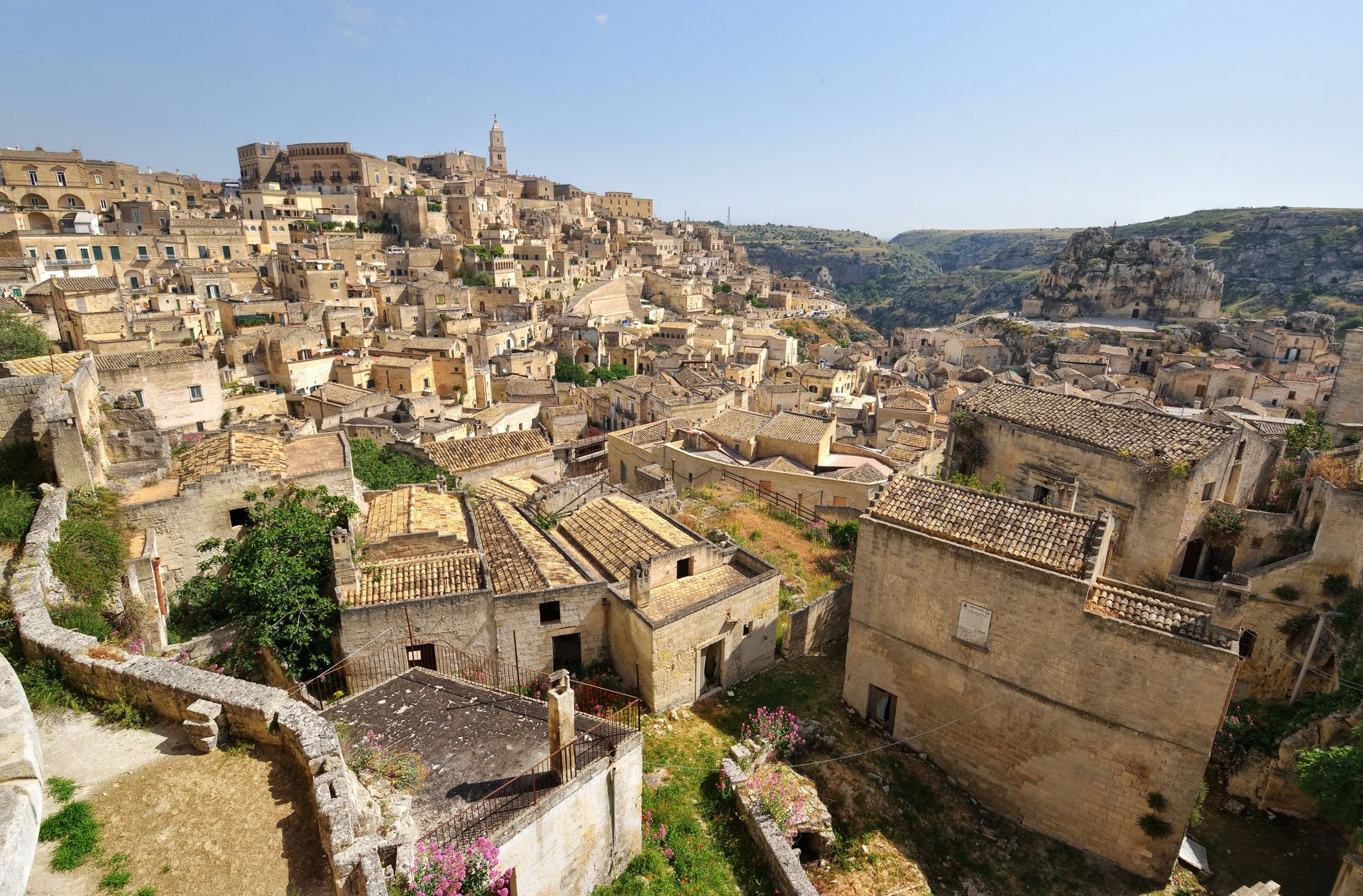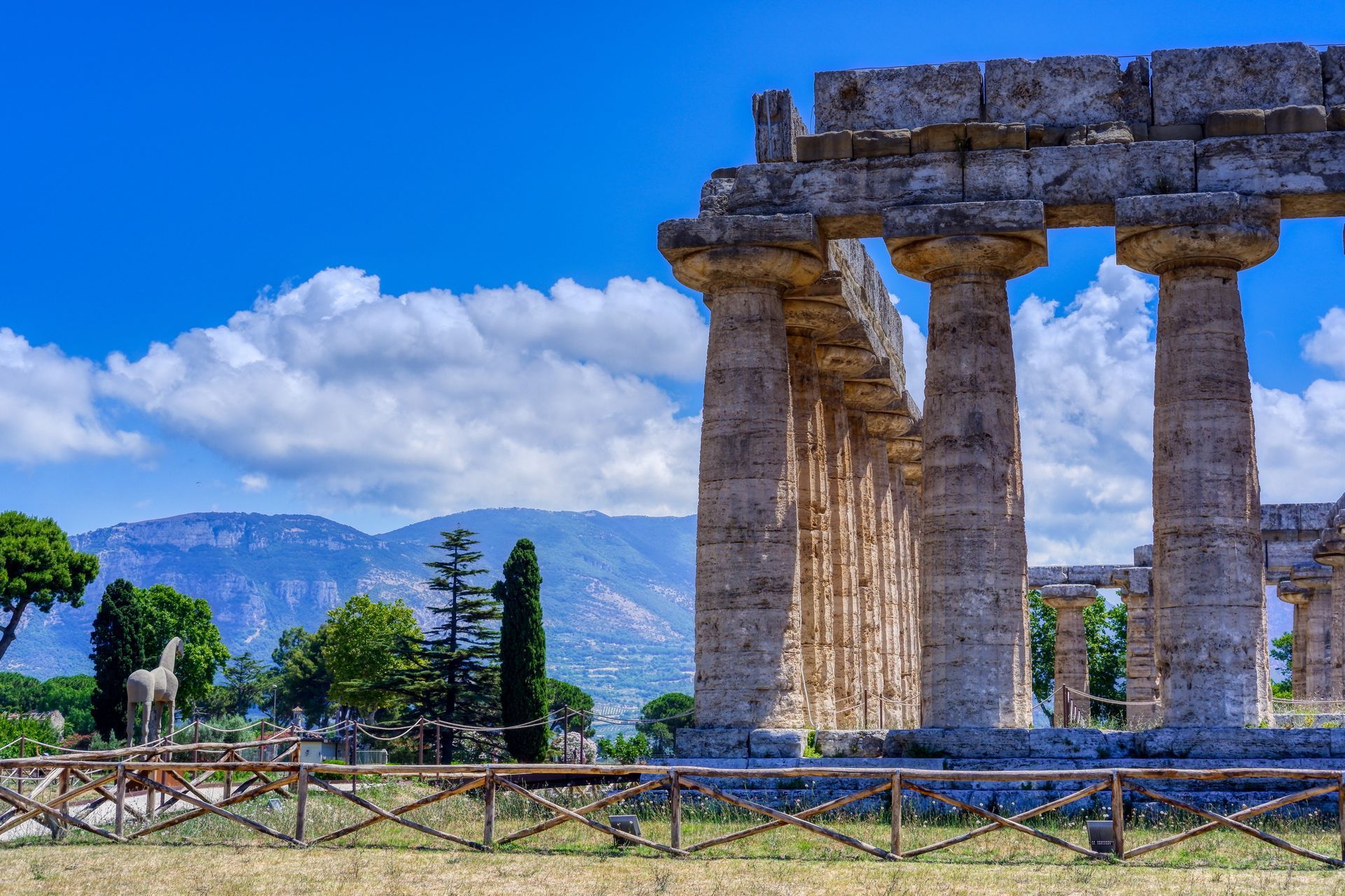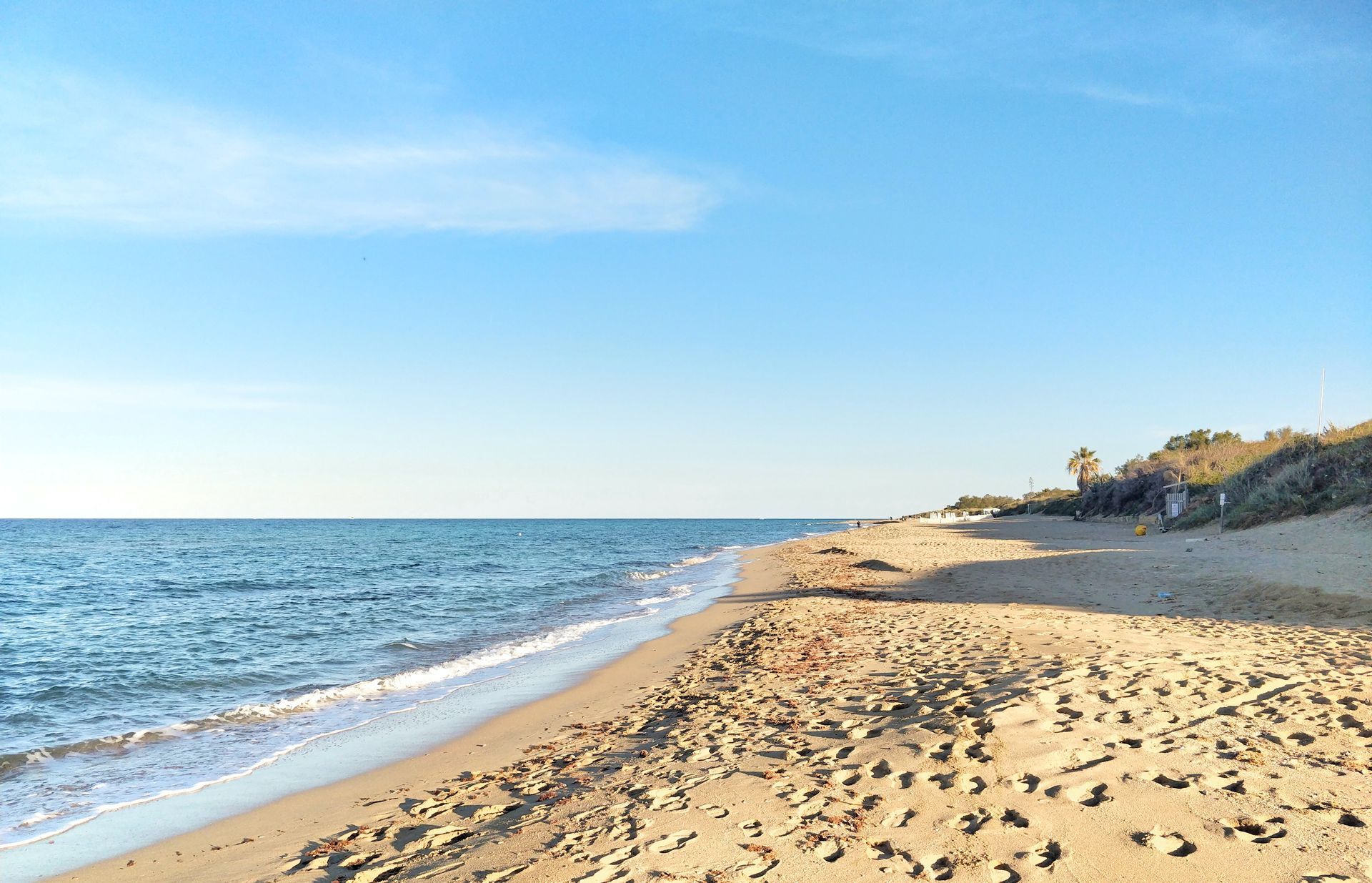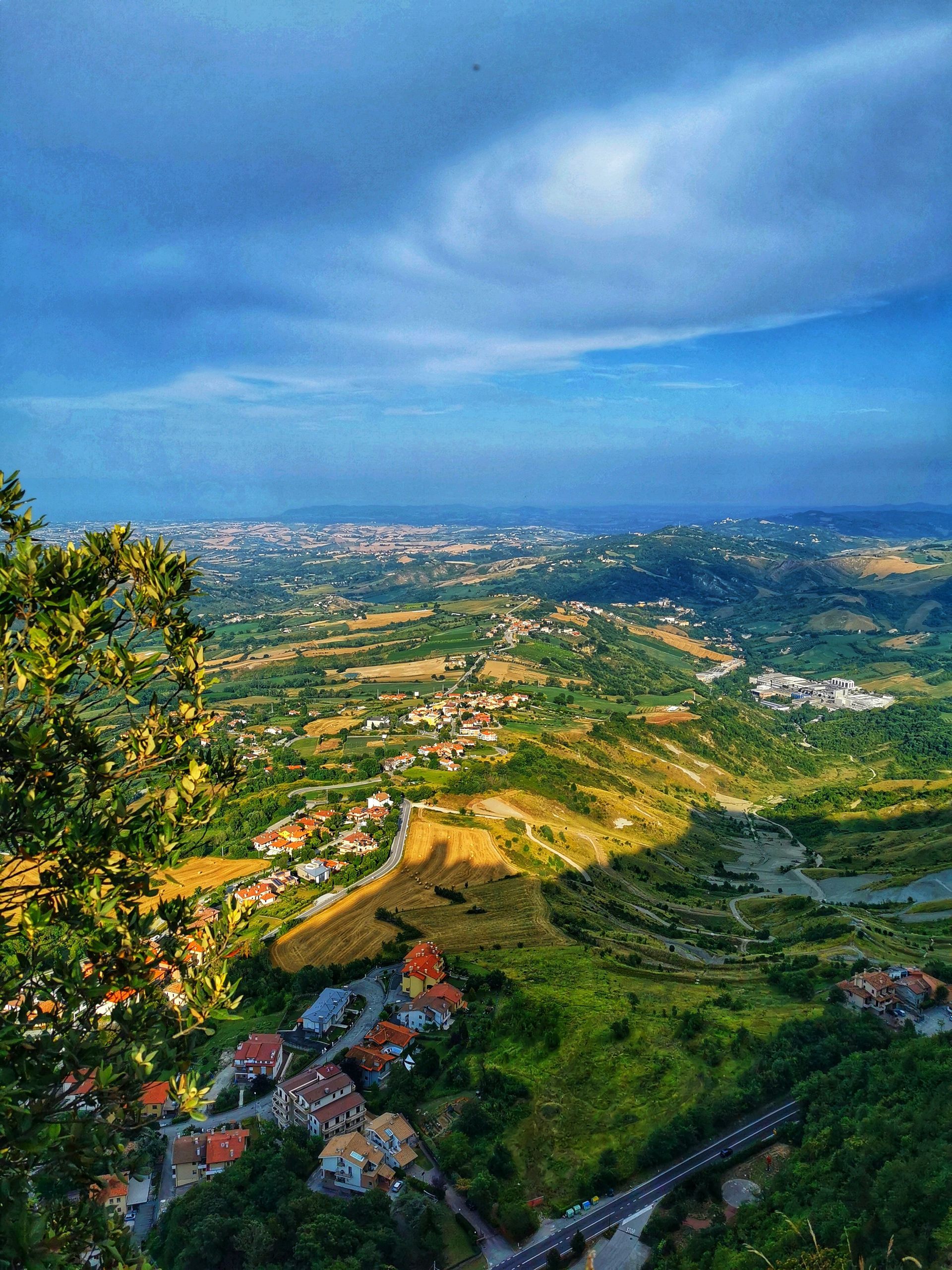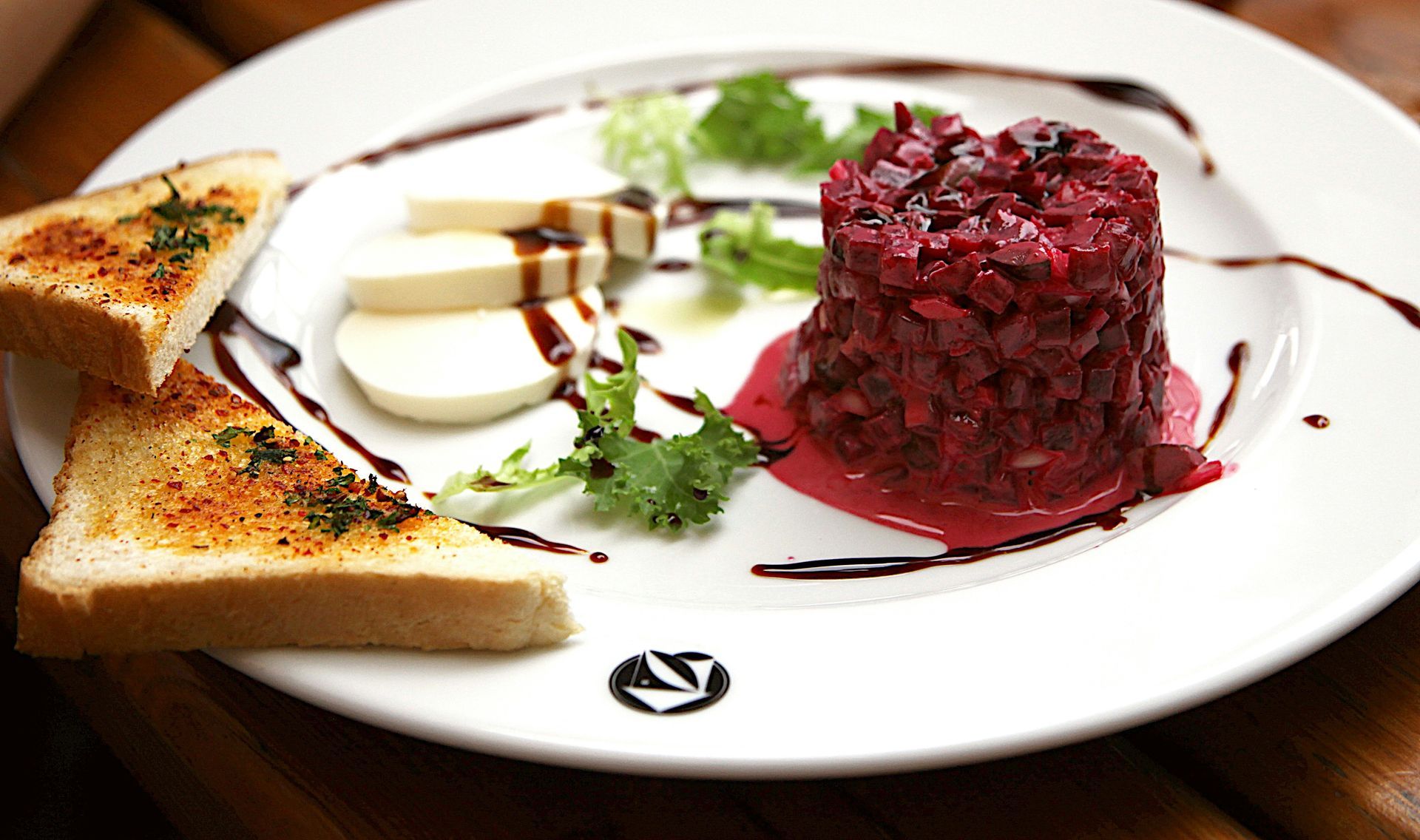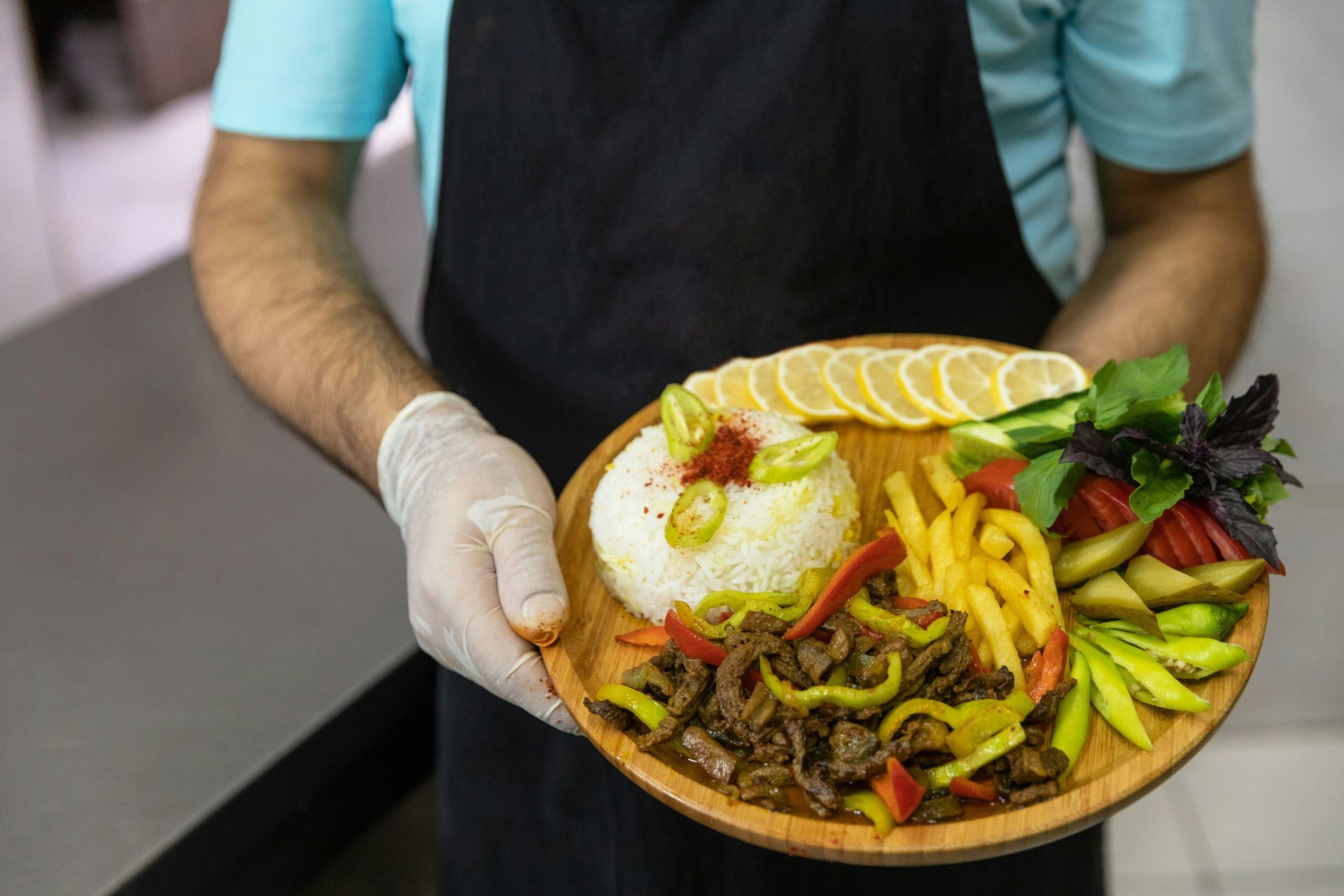Spreading Smile across the globe
Hidden Gems of Northern Italy
Hidden Gems of Italy are a testament to the country's diverse and enchanting beauty, often concealed from the traditional tourist routes. While Italy is celebrated for its iconic cities like Rome, Florence, Venice, and the Amalfi and Cinque Terre coasts, it's the lesser-known destinations that promise a unique journey. These unexplored regions offer travellers a chance to experience Italy's authentic culinary delights, rich historical narratives, and stunning natural landscapes. From the northern reaches to the southern shores, these Hidden Gems of Italy reveal a different facet of this remarkable nation.
Lake Orta - Piedmont
Hidden Gems of Italy come to life at Lake Orta, tucked away near the Swiss border in the heart of Piedmont. This hidden paradise often evades the spotlight compared to its more famous counterparts like Lake Como and Lake Garda. The historic town of Orta San Giulio, with its Baroque and Medieval architecture, cobbled streets, and idyllic Piazza Motta, enchants visitors. The glistening waters of the lake itself invite moments of serenity. What makes Lake Orta truly extraordinary is the mysterious island at its centre—a tranquil sanctuary inhabited by resident nuns.
Treviso - Veneto
Among the Hidden Gems of Italy, Treviso stands as a city in the Veneto region that retains its genuine northern Italian charm. Meandering through its narrow cobbled lanes, picturesque canals, and medieval city walls feels like a step back. Positioned on the fringes of the renowned Prosecco wine region, Treviso provides a delightful excuse for an aperitivo with a glass of Italy's renowned sparkling Prosecco.
Aosta Valley
Nestled among the bordering landscapes of Switzerland and France, the Aosta Valley showcases breathtaking alpine scenery, perched castles, and traditions that thrive throughout the year. When spring and summer arrive, the region's walking trails entice explorers. This season also brings lively festivals that celebrate folk traditions that date back to medieval times. Be sure to savour the local cheese Fontina, a culinary delight that embodies the spirit of this Hidden Gem of Italy.
Alba - Piedmont
Alba, a sought-after destination among Italy's hidden gems, is situated in the vineyards of the Langhe Hills. Once adorned with a hundred towers, Alba exudes a charming rural ambience. It's renowned for its autumn truffle festival, a gastronomic event that captures the essence of the region. Alba is also celebrated for its dark chocolate, hazelnut groves, white truffles, and prestigious wineries. It's from this very region that the sought-after Barolo wine originates.
Camogli - Liguria
Camogli, a typical and vibrant Italian seaside village on the Ligurian Riviera di Levante, perfectly embodies the spirit of the Hidden Gems of Italy. Towering, brightly painted houses dominate the town, and it has become a magnet for visitors seeking pristine beaches, Ligurian cuisine, the rustic fishing marina, Italian culture, and a tranquil natural setting. Camogli has earned its reputation for culinary excellence, focusing on fish and seafood, particularly anchovies and tuna, as well as the iconic pesto sauce made from basil and pine nuts.
Brescia - Lombardy
Hidden Gems of Italy often come alive through history, and Brescia is no exception. In this small city, history unfolds through a tapestry of architectural styles, spanning Roman, Medieval, Renaissance, Baroque, and even Art Deco. Walking through Brescia feels like a journey through time, and a visit to the captivating Piazza della Loggia, framed by a stunning Venetian-style palace at its heart, is a must for history enthusiasts.
Trieste
Trieste is a refreshingly unique destination, an Italian city positioned near the Slovenian border with its dialect that's a delightful blend of Austrian-German, Greek, Croatian, and Italian. Trieste's neoclassical waterfront is a sight to behold, with its marina brimming with stylish, glimmering yachts. The city's offerings include clear blue skies, expansive sandy beaches, city lidos, and the surrounding vineyards. Trieste is a Hidden Gem of Italy that belongs on every traveller's Northern Italian itinerary.
Modena - Emilia-Romagna
Modena is famed for its Hidden Gems of Italy, including balsamic vinegar, Luciano Pavarotti, the Romanesque cathedral, and the nearby Ferrari museum. Beyond these illustrious attractions, Modena reveals a treasure trove of remarkable restaurants. Massimo Bottura's Osteria Francescana has twice earned a place among the world's top 50 eateries, showcasing the culinary excellence of this Hidden Gem. While in Modena, don't miss the chance to savour local specialities like stuffed tortellini and sparkling Lambrusco wine, the perfect complement to your gastronomic journey.
Chiusa / Klausen - South Tyrol
Chiusa, also known as Klausen, is one of Italy's most picturesque villages. It is situated on the banks of the Isarco River in the South Tyrolean region near the Austrian border. Chestnut groves, green fields, vineyards, and farmsteads surround the town. In the village itself, visitors are captivated by narrow alleyways, coats of arms, large bay windows, crenellated facades, and the two main squares.
Ravenna - Emilia-Romagna
Ravenna offers a treasure trove of experiences among the Hidden Gems of Italy. This city is a feast for the senses, with its diverse offerings of food, music, art, culture, history, beaches, wine, and mosaics. Ravenna is home to eight UNESCO-listed sites, making it a must-visit for history and art enthusiasts. It's also known for its two-month-long music festival, Dante Alighieri's tomb, local culinary delights, nearby beach resorts, and the opportunity to explore pinewood forests. The city's fame is derived from its stunning mosaics, dating from the fifth and sixth centuries, scattered throughout the town.
In conclusion, Italy's Hidden Gems invite you to embark on a journey less travelled, where the rich tapestry of history, diverse cuisine, and breathtaking landscapes come to life. These lesser-known destinations provide an authentic Italian experience, away from the bustling crowds, revealing the nation's soul in its purest form. Explore these Hidden Gems to uncover Italy's hidden treasures.
Hidden Gems of Central Italy
Hidden Gems of Italy beckon the adventurous traveller to explore the lesser-known treasures that this remarkable country holds. From the picturesque valleys of Tuscany to the medieval charm of Umbria, the mysterious landscapes of Molise, and the architectural wonders of San Gimignano, these destinations promise unforgettable experiences.
Garfagnana - Tuscany
The Garfagnana region is a hidden gem in the beautiful Tuscan valley north of Lucca. It is crossed by the Serchio River, and the landscape is characterized by fertile greenery, rugged mountains, and charming villages. Outdoor activities such as hiking, walking, and mountain biking are enjoyed by many people in this area. Garfagnana is home to several one-of-a-kind attractions, including a ghost town, a wind cave, and the Devil's Bridge at Borgo a Mozzano.
Gubbio - Umbria
Umbria hides many treasures, and a particular favourite among Hidden Gems of Italy is the Medieval hilltop town of Gubbio. Gubbio, a city with a history dating back over 2,000 years, is a maze of cobbled streets and stone buildings that have been perfectly preserved. Visitors can take a cable car to the summit of Mount Ingino to enjoy panoramic views of the surrounding area. In addition, Gubbio hosts Italy's oldest event, the Corsa dei Ceri, in which teams race through the streets carrying massive wooden candles.
Molise
Molise is Italy's second-smallest region and one of its best-kept secrets. Hidden Gems of Italy are plentiful here. The picturesque town of Agnone is renowned for its artisanal bells, produced by the oldest family-run bell foundry in the world. Meanwhile, Campobasso, the regional capital, boasts a stunning medieval old town. Molise offers a captivating mix of historical charm and natural beauty, with rugged mountains, rolling hills, and pristine beaches along the Adriatic coast.
San Gimignano - Tuscany
Nestled in the heart of Tuscany, San Gimignano boasts medieval architecture and, of course, its famous towers. The town's historic centre is a UNESCO World Heritage site, known for its fourteen stone towers that once symbolised wealth and power. San Gimignano offers a glimpse into medieval Tuscany, with well-preserved streets and squares that transport visitors to another time. Besides the towers, make sure to explore the Collegiate Church and indulge in the local Vernaccia wine, a crisp white wine produced in the region.
Spello - Umbria
Another gem in the heart of Italy, Spello enchants visitors with its winding medieval streets and stunning floral displays. Known as the "Città Infiorata" or "flower town," Spello hosts the Infiorata festival, during which the streets are carpeted with intricate flower petal designs. This event occurs in early June and is a magnificent spectacle. Outside of the festival, Spello's charm continues with its well-preserved historic centre and beautiful churches.
Trulli of Alberobello - Apulia
Apulia, or Puglia, is famous for its unique trulli houses, and Alberobello is the epicentre of this architectural marvel. These whitewashed conical homes are a UNESCO World Heritage Site that offers a glimpse into the region's history. Visitors can even stay in trulli that have been converted into accommodations, providing a truly immersive experience.
Norcia - Umbria
Nestled in the Sibillini Mountains, Norcia is renowned for its gastronomy. This charming town produces exceptional cured meats, particularly prosciutto and salami. For food enthusiasts, Norcia is a true Hidden Gem of Italy. Explore local shops, taste the region's specialities, and visit the beautiful town square. Nature enthusiasts will also find hiking trails and natural beauty in the nearby Monti Sibillini National Park.
Montefalco - Umbria
Montefalco is often called the "Balcony of Umbria" for its stunning views over the surrounding valley. This charming town is also known for its wine, particularly Sagrantino, one of Italy's most robust red wines. Montefalco's medieval centre is picturesque and hosts several churches with remarkable frescoes, making it a cultural and gastronomic gem.
Castelluccio di Norcia - Umbria
High in the Sibillini Mountains, Castelluccio di Norcia is a quaint village known for its stunning wildflower blooms in late spring and early summer. The surrounding plateau becomes a colourful tapestry, attracting photographers and nature enthusiasts. Besides the flowers, visitors can enjoy hiking and take in the breathtaking scenery. Hidden Gems of Italy like Castelluccio di Norcia provide a unique connection to nature and the changing seasons.
In the heart of Italy, a treasury of Hidden Gems awaits the intrepid traveller. From the mysterious ghost town of Garfagnana to the ancient charms of Gubbio, the enchanting landscapes of Molise, and the medieval splendours of San Gimignano, these lesser-known destinations reveal Italy's diverse beauty and rich history. Journey through the tranquil streets of Spello, marvel at the unique trulli houses in Alberobello, savour the culinary delights of Norcia, and bask in the vibrant blooms of Castelluccio di Norcia. These Hidden Gems of Italy promise an unforgettable adventure in a land of timeless wonder.
Hidden Gems of Southern Italy
Italy, a land of rich history, captivating art, and exquisite cuisine, is known for its iconic cities and world-famous landmarks. Despite the tourist-filled streets and crowded piazzas, the country holds many hidden gems—lesser-known destinations that offer a more intimate and authentic experience. These places, tucked away in various corners of Italy, are a testament to the nation's diverse and enchanting beauty, waiting to be explored by the discerning traveller. From medieval towns perched atop hills to charming coastal villages and ancient archaeological sites, the Hidden Gems of Italy promise unique adventures and unforgettable memories.
Civita di Bagnoregio - Lazio
Civita di Bagnoregio is often called the "Dying Town" because of its gradual erosion over the centuries. This medieval village is perched on a hilltop and can only be reached by a long footbridge. It's a unique destination, seemingly suspended in time, and is the perfect Hidden Gem for history buffs and photographers.
Matera - Basilicata
Matera, known for its cave dwellings, is one of Italy's most intriguing and unique destinations. The Sassi di Matera, a historic cave settlement, is a UNESCO World Heritage Site. Matera is gaining popularity but still qualifies as one of the Hidden Gems of Italy. Touring this labyrinth of stone-carved rooms and narrow streets offers an incredible historical journey.
Sperlonga - Lazio
Sperlonga is a charming coastal town characterized by its pristine beaches, winding alleys, and picturesque piazzas. Nestled between Rome and Naples, Sperlonga is often overlooked by travellers. A visit here reveals a relaxed and authentic Italian atmosphere, perfect for strolls and seaside relaxation. Take advantage of the Grotto of Tiberius, a cave once used as the emperor's villa and now a museum.
Paestum - Campania
The ancient ruins of Paestum, originally a Greek colony known as Poseidonia, provide an extraordinary window into Italy's history. The temples are exceptionally well-preserved, ranking among the best-preserved in the world. Paestum is also home to a fascinating archaeological museum that displays artefacts from the site. Enjoy a step back in time amid the Hidden Gems of Italy.
Castro - Apulia
Castro, a picturesque coastal town, boasts a historic centre perched on a rocky outcrop. Visitors can explore ancient churches, fortifications, and a charming harbour. Castro also has sea caves that can be explored by boat. The region's cuisine is a seafood lover's paradise, making this town a Hidden Gem for food enthusiasts as well.
Scilla - Calabria
Scilla, an idyllic coastal village in Calabria, offers stunning sea views and hidden beaches. The town is known for the Ruffo Castle, which dominates the landscape, and the legendary sea monster Scylla from Greek mythology. The charming village is a serene and lesser-known alternative to some of the more crowded Italian seaside destinations.
San Marino
San Marino is a microstate surrounded by Italy and is one of the world's oldest republics. It's a destination that's often missed, making it a true Hidden Gem. San Marino boasts dramatic mountaintop views, historic architecture, and unique attractions like the Guaita Tower and the Palazzo Pubblico. For collectors, the country is also known for its beautiful stamps and coins.
Conclusion
Discovering the Allure of Hidden Gems of Italy
Hidden Gems of Italy offers travellers an authentic experience, far removed from the tourist-packed cities and famous landmarks. These lesser-known destinations unravel the genuine charm, culture, history, and culinary wonders that make Italy an endlessly fascinating country to explore. From the mountains of the North to the coasts of the South, each region holds its treasures, waiting to be discovered by those who venture off the beaten path. By exploring the Hidden Gems of Italy, you can craft a unique and unforgettable journey that deepens your appreciation of this incredible country. Plan your trip carefully, and you will be rewarded with the beauty, history, and flavours that characterize these enchanting places.
Tasting Czech Cuisine:
A Food Lover’s Guide
Embarking on a culinary journey through the Czech Republic is a feast for the senses, where traditional flavors and hearty dishes reflect the country's rich history and culture. Renowned for its rich and varied Czech Republic food, this Central European gem presents a tempting selection of culinary delights that every food enthusiast must try. From rustic taverns serving time-honored recipes to modern restaurants that creatively reinterpret classic dishes, there’s something to satisfy every palate.
Czech cuisine is often characterized by its comforting ingredients, including hearty meats, fresh vegetables, and delectable pastries. Dishes like svíčková, a creamy beef dish served with dumplings, and goulash, a savory stew that warms the soul, are just the beginning. The Czech Republic is also famous for its excellent beer, which has been brewed for centuries and pairs perfectly with the local fare.
As you explore the picturesque towns and vibrant cities, prepare to indulge in flavors that tell the story of this beautiful nation. Join us as we delve deeper into the culinary landscape of the Czech Republic and discover the must-try dishes that make this country a true haven for food enthusiasts.
Czech Cuisine: Exploring the Flavors of the Czech Republic
Czech Republic food is a satisfying fusion of robust flavors, authentic ingredients, and cherished recipes that showcase the country’s deep cultural roots. At the heart of this cuisine is the concept of comfort food, with dishes designed to warm the soul. One of the most beloved staples is
svíčková, a creamy vegetable sauce served over marinated beef and paired with fluffy bread dumplings. This dish epitomizes the Czech approach to meals, emphasizing hearty ingredients and robust flavors.
In addition to traditional fare, Czech Republic food showcases an impressive array of regional specialties. For example, Moravia is known for its exquisite wines, while the countryside features local cheeses and artisanal meats.
Street food is another vibrant aspect of Czech cuisine, with options like smažený sýr (fried cheese) tempting passersby in bustling towns.
Beer is also an integral part of the culinary landscape, with the Czech Republic boasting a long-standing brewing tradition, especially known for Pilsner. Exploring Czech cuisine offers a unique journey through flavors that reflect the country’s history, culture, and agricultural bounty, making it a must-try for any food lover visiting the region.
Czech Beer Culture: Where to Enjoy a Pint
Czech beer culture is an essential part of the country's identity, intertwining seamlessly with Czech Republic food to create a unique culinary experience. Known as the birthplace of Pilsner, the Czech Republic boasts a brewing tradition that dates back centuries. Locals and tourists alike gather in cozy
hospodas (pubs) to enjoy a pint of their favorite lager, creating an inviting atmosphere filled with laughter and camaraderie.
Numerous breweries provide guided tours, allowing visitors to explore the beer-making process, from choosing ingredients to the art of fermentation. These tours often conclude with tastings, allowing you to sample a variety of brews paired perfectly with traditional Czech Republic food like goulash or smažený sýr (fried cheese).
Cities like Prague, Plzeň, and Český Krumlov feature numerous beer gardens and pubs where you can savor locally brewed beers, often served in generous portions. Seasonal beer festivals, such as the Czech Beer Festival, celebrate this rich culture, showcasing hundreds of beers alongside traditional dishes. Whether you prefer sipping a classic lager or trying out innovative craft brews, the Czech Republic offers countless opportunities to immerse yourself in its vibrant beer culture while enjoying delicious local cuisine.
Czech Street Food: Tasty Treats on the Go
Czech Republic food is not just about traditional meals enjoyed in restaurants; it also encompasses a vibrant street food culture that reflects the country’s culinary diversity. When exploring the charming streets of cities like Prague or Brno, you’ll encounter a delightful array of street food options that are perfect for those on the go.
A beloved treat is trdelník, a sweet pastry crafted from rolled dough, grilled to perfection, and coated in a layer of sugar and nuts. Often filled with ice cream or other delicious toppings, trdelník is a must-try for anyone looking to satisfy their sweet tooth.
Another popular street food item is smažený sýr, or fried cheese. Typically made from Edam or Hermelín cheese, it’s breaded and deep-fried until golden brown, then served with tartar sauce and fries—a delicious indulgence that locals love.
Don’t forget to sample klobása, a grilled sausage that’s served hot on a bun, often topped with mustard or sauerkraut. These tasty treats offer a quick and satisfying way to experience Czech Republic food while you explore the lively atmosphere of local markets and festivals. Whether you're snacking between sightseeing or enjoying a late-night bite, Czech street food is sure to please!
Traditional Dishes to Savor
1.Svíčková:
No exploration of
Czech Republic food would be complete without trying svíčková. This beloved dish features marinated beef served with a creamy vegetable sauce made from carrots, onions, and celery, accompanied by fluffy bread dumplings. The balance of flavors—from the savory meat to the slightly sweet sauce—makes svíčková a quintessential comfort food that warms both the heart and the palate.
2. Goulash (Guláš):
Though goulash has its roots in Hungary, the Czech Republic has embraced it as one of its own. Czech goulash is a thick and hearty stew made with tender chunks of meat, often beef or pork, slow-cooked with onions, garlic, and paprika. Typically served with bread or dumplings, this dish is perfect for chilly days and represents the hearty nature of
Czech Republic food.
3. Knedlíky (Dumplings):
These fluffy dumplings are a staple of Czech cuisine, available in various forms, including potato and bread dumplings. Knedlíky are often served as a side dish to soak up the rich sauces from meat dishes, making them essential for fully experiencing the depth of traditional Czech meals.
4. Trdelník:
Although not originally Czech, this sweet pastry has gained popularity as a favorite street food across the country. Trdelník is crafted from rolled dough, grilled to perfection, and then coated in sugar and nuts. Often filled with ice cream or other sweet toppings, it’s a must-try treat while exploring the charming towns and vibrant cities of the Czech Republic.
Exploring Regional Specialties
As you travel across the Czech Republic, you'll discover regional specialties that beautifully showcase the diversity of Czech Republic food.
1.Moravian Wine:
In the southern region of Moravia, wine production flourishes, giving rise to a rich wine culture. This area is renowned for its picturesque vineyards and charming wine cellars, where visitors can sample an array of local wines, including the popular Müller-Thurgau and Grüner Veltliner. Pairing these exquisite wines with local cheeses creates an unforgettable culinary experience that embodies the essence of
Czech Republic food.
2. Smažený sýr:
Fried cheese, or smažený sýr, is a beloved street food that every visitor must try when in the Czech Republic. Usually crafted from Edam or Hermelín cheese, it’s coated in breadcrumbs and fried until it reaches a crispy, golden-brown finish. Often served alongside tartar sauce and crispy fries, this indulgent dish has earned its status as a favorite among both locals and tourists, providing a delicious taste of Czech comfort food.
3.Pilsner Beer:
No discussion of
Czech Republic food would be complete without mentioning beer. The country is world-famous for its brewing tradition, particularly for Pilsner, which originated in the city of Plzeň. Beer culture is deeply woven into the fabric of Czech society, with many restaurants offering beer tastings that make it easy to pair local brews with your meals, further enhancing the culinary adventure of this vibrant nation.
Where to Eat
Czech cuisine can be enjoyed in various settings, from traditional taverns to modern bistros. Here are some recommendations for where to savor Czech Republic food:
1.Traditional Taverns (Hospoda):
For an authentic experience, visit a local hospoda. These traditional pubs often serve classic
Czech Republic food in a cozy, welcoming atmosphere. The dishes are typically hearty and comforting, and you'll find locals enjoying their meals alongside you, creating a true sense of community.
2. Fine Dining:
For those looking to indulge, many cities offer fine dining establishments where talented chefs elevate traditional dishes with a modern twist. Restaurants in Prague, for example, frequently feature seasonal ingredients and innovative cooking techniques, allowing you to experience
Czech Republic food in a sophisticated setting. These culinary havens often highlight local flavors while presenting dishes in an artistic manner.
3. Food Markets:
Exploring food markets is a fantastic way to immerse yourself in
Czech Republic food culture. Numerous towns host weekly markets where visitors can taste local treats, purchase fresh produce, and explore regional specialties. Look for stands selling homemade sausages, artisanal cheeses, and delightful pastries, providing a hands-on experience of the country's rich culinary landscape.
Culinary Festivals and Events
For food enthusiasts, planning your visit to align with one of the many culinary festivals held year-round is highly recommended. Events like the Prague Food Festival and the Czech Beer Festival offer fantastic opportunities to sample an impressive array of Czech Republic food while enjoying live music and entertainment. These festivals showcase the best of traditional and contemporary Czech cuisine, featuring local specialties, seasonal ingredients, and innovative culinary creations.
At the Prague Food Festival, for instance, you can taste dishes from some of the city's finest restaurants, allowing you to explore the diverse flavors of Czech Republic food in one location. Meanwhile, the Czech Beer Festival celebrates the country’s renowned brewing heritage, presenting various local beers paired with hearty Czech dishes, such as goulash and svíčková. Joining these events offers the chance to savor mouthwatering dishes while immersing yourself in a lively setting with locals and other food enthusiasts. Be sure to check the festival schedule as you plan your trip—these gatherings are an ideal way to experience the Czech Republic’s culinary diversity up close.
Conclusion: A Journey Through Czech Republic Food
Exploring Czech Republic food is more than just a culinary adventure; it’s a journey through the country’s rich history and vibrant culture. From the hearty traditional dishes like svíčková and goulash to delightful street foods such as trdelník and smažený sýr, every meal tells a story. The regional specialties, whether it's Moravian wines or the famous Pilsner beer from Plzeň, highlight the diversity and depth of flavors found throughout the Czech Republic.
Dining experiences range from cozy hospodas to upscale restaurants, allowing visitors to savor authentic dishes in various settings. Participating in food markets and culinary festivals further enriches this experience, offering a chance to taste local delicacies and engage with the community.
As you embark on your culinary exploration, remember that Czech Republic food is not just about eating; it’s about connection—connecting with the people, the traditions, and the landscapes that shape these flavors. So whether you're indulging in a comforting meal or raising a glass of local beer, you are partaking in a vibrant tapestry of tastes that embody the heart and soul of the Czech Republic. Embrace the flavors, and let them inspire your journey through this beautiful country.
Things To Do | Travel Information | Local's Favourites

